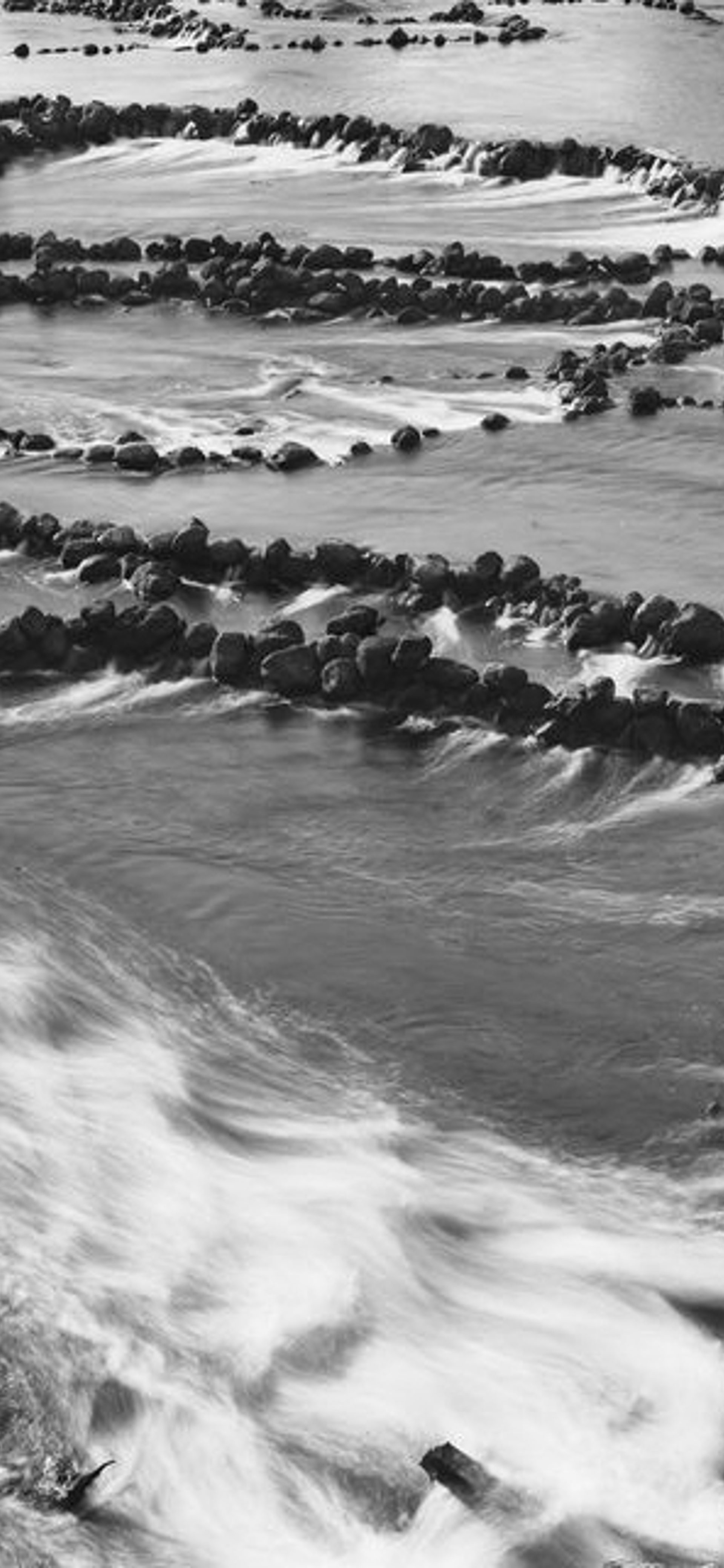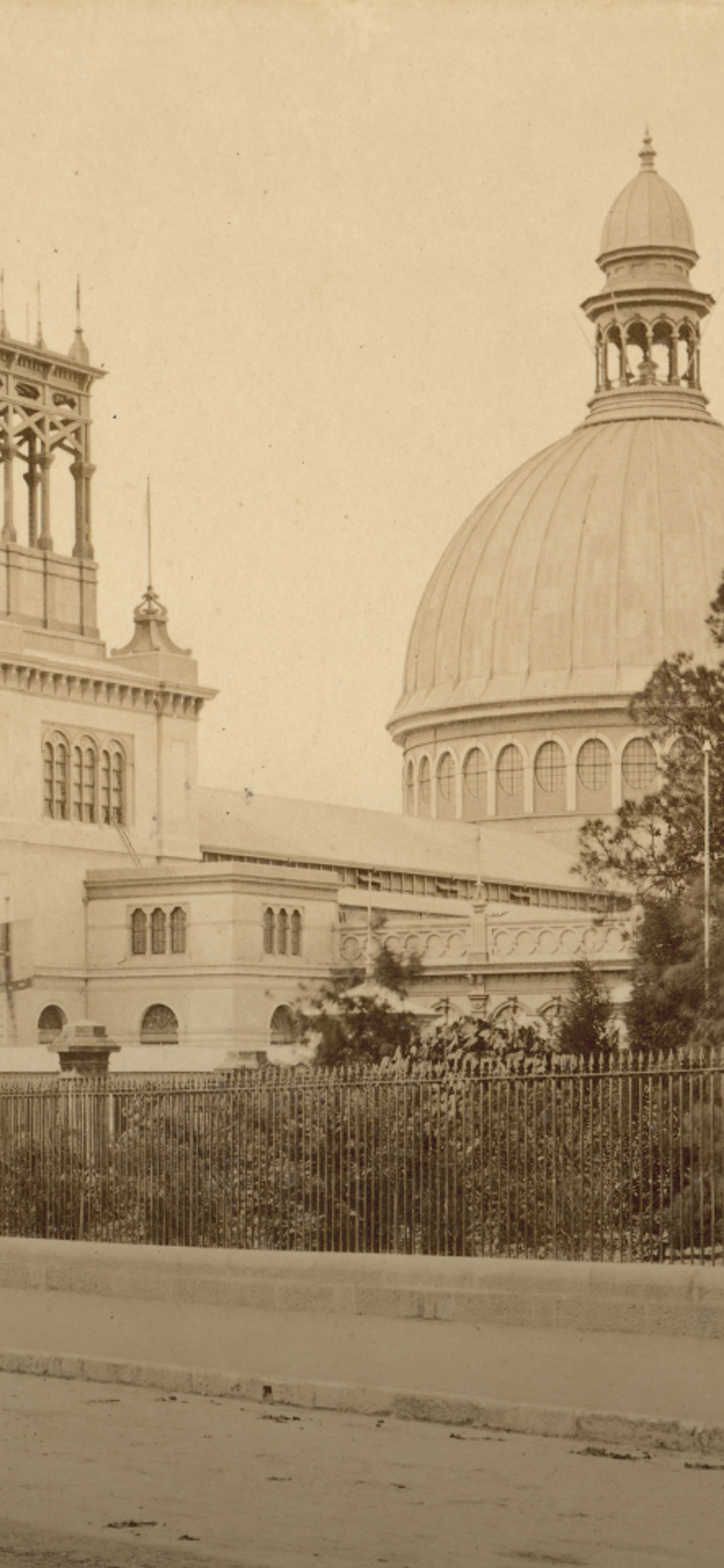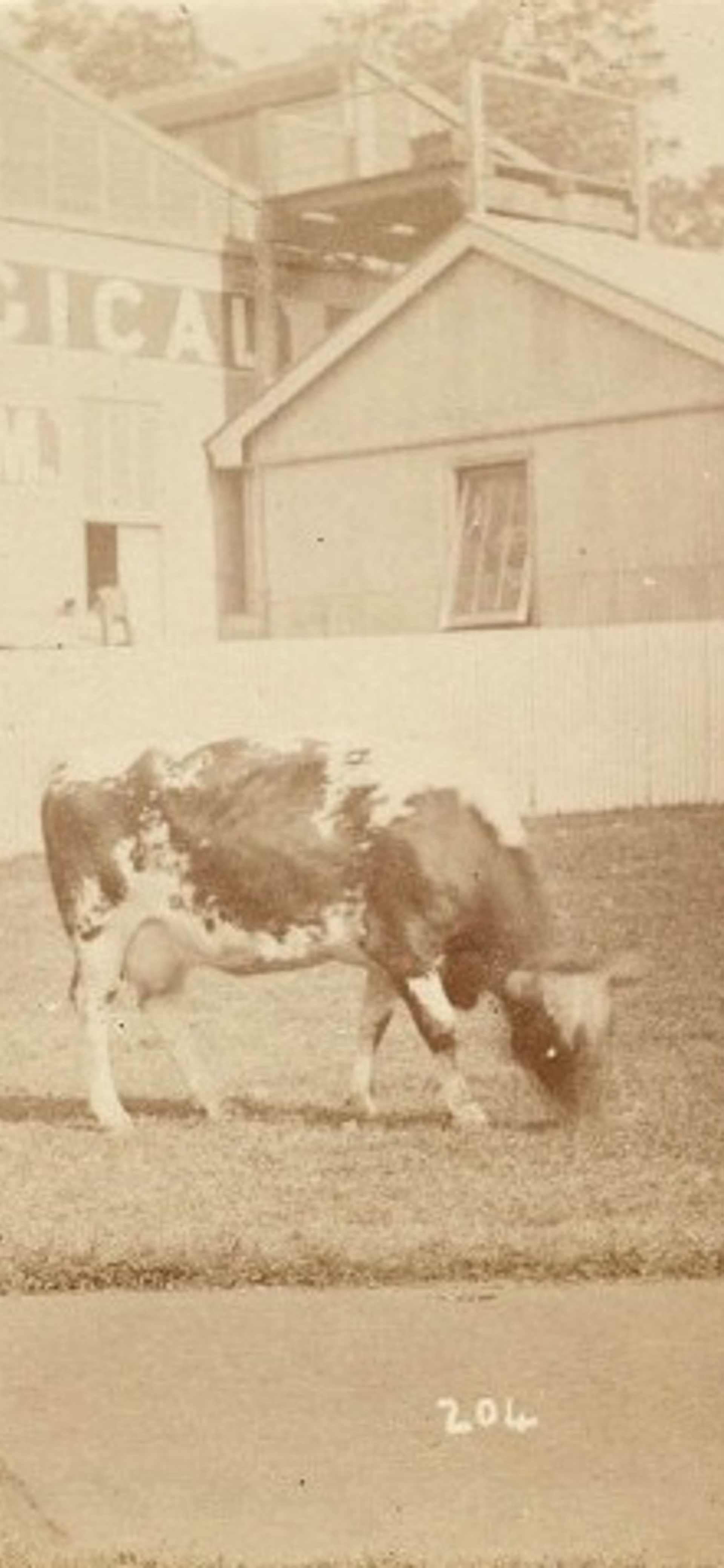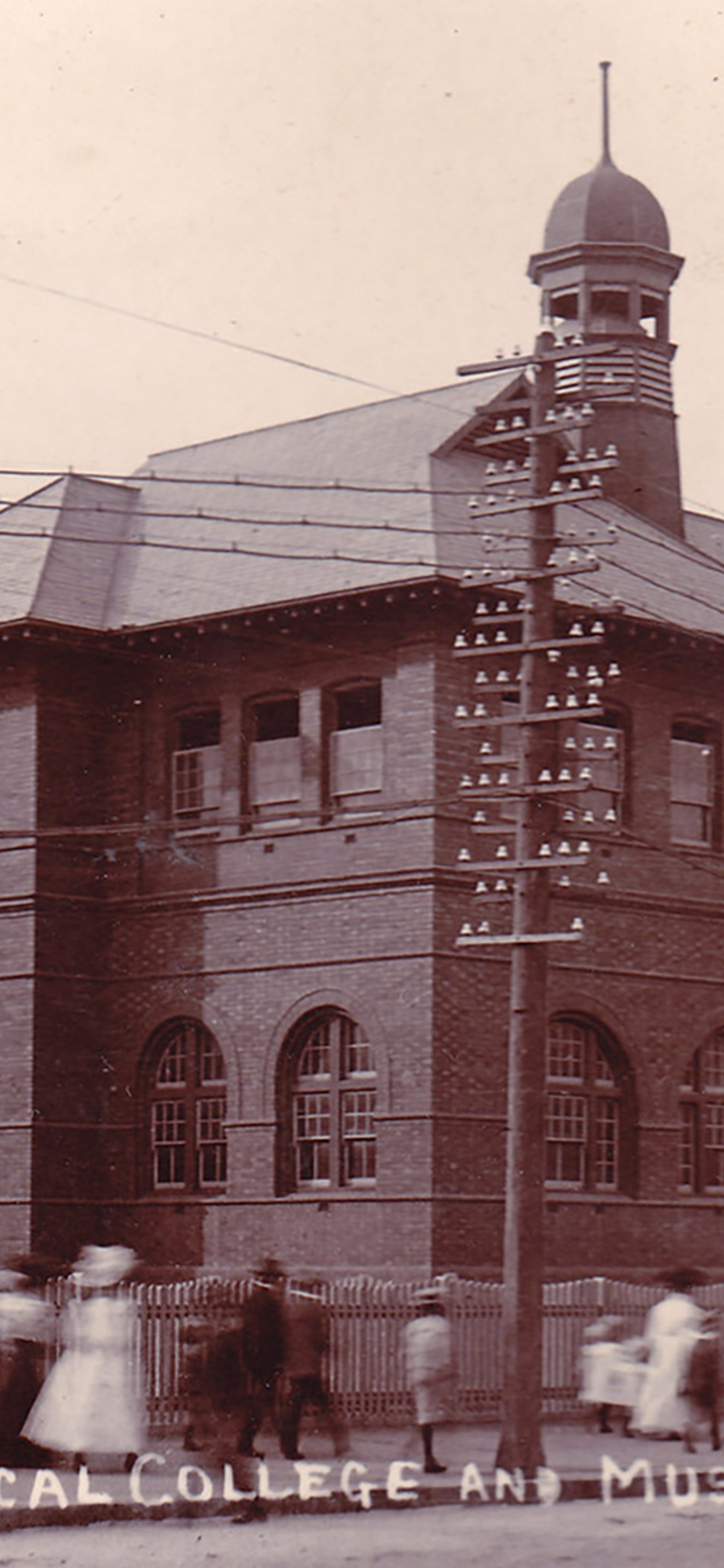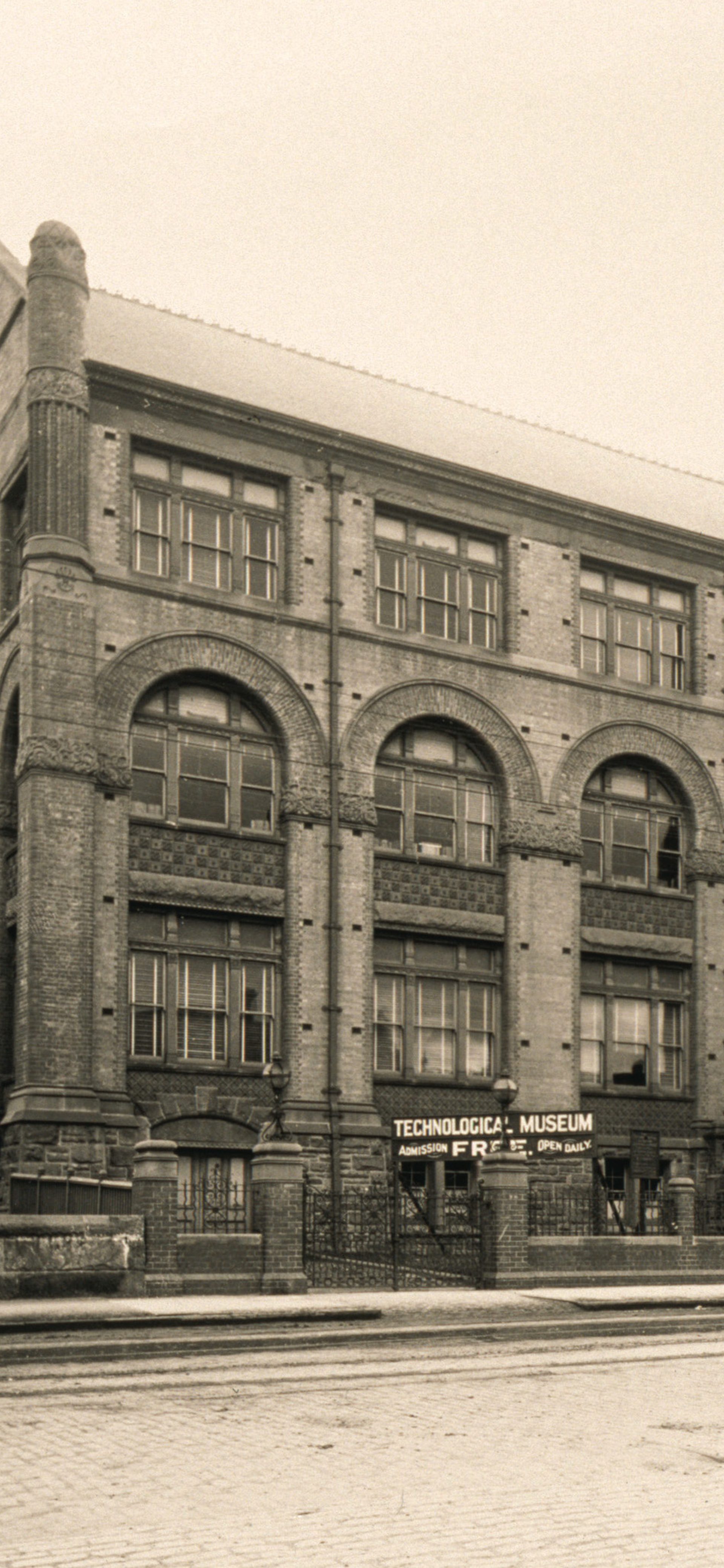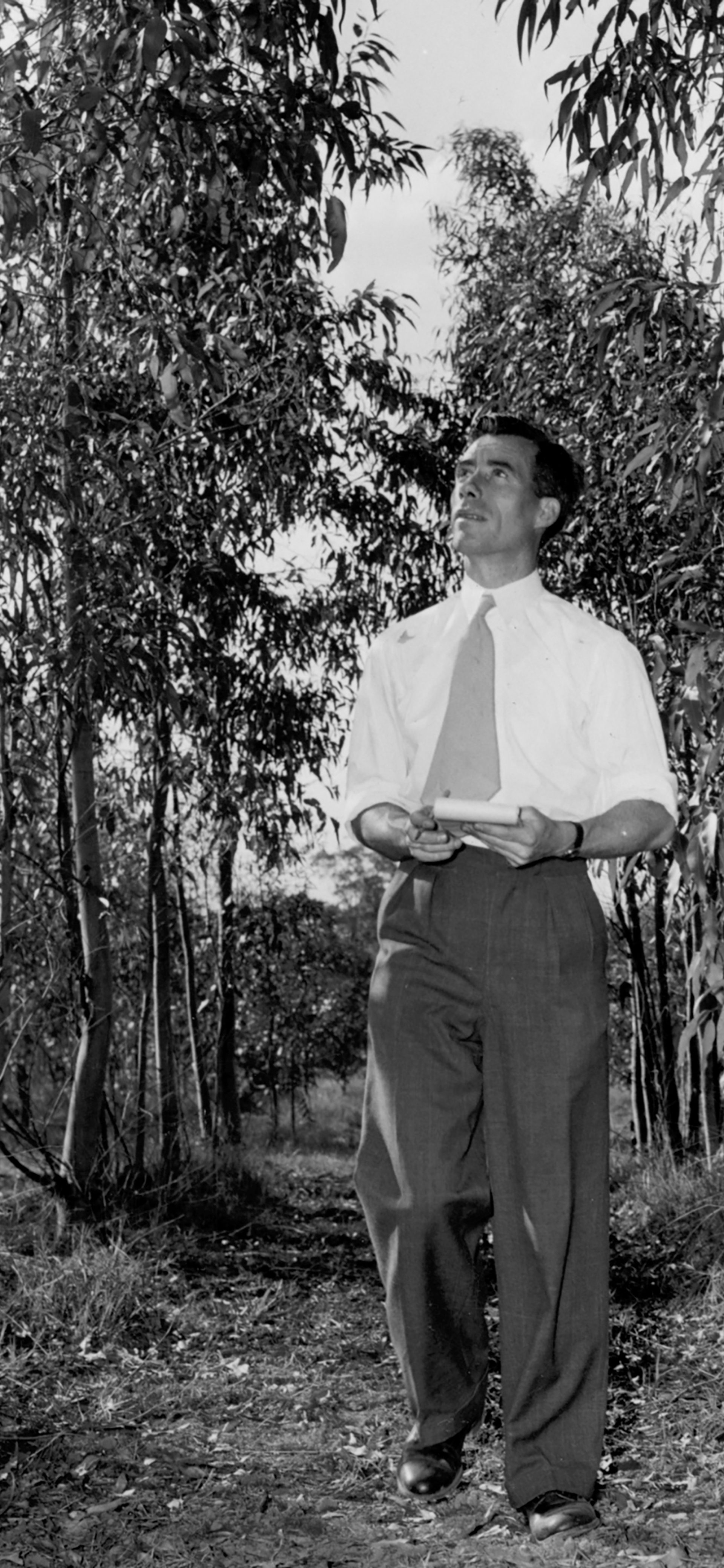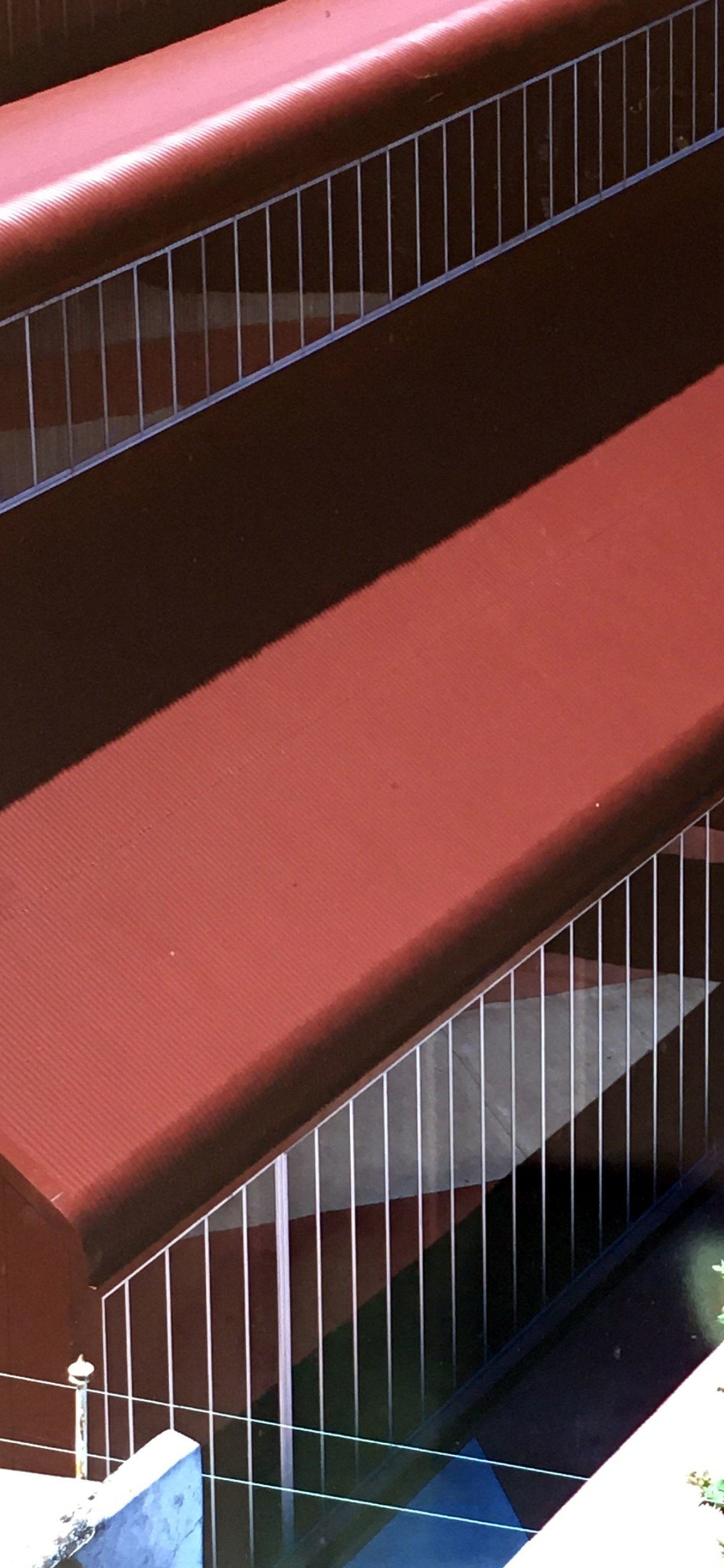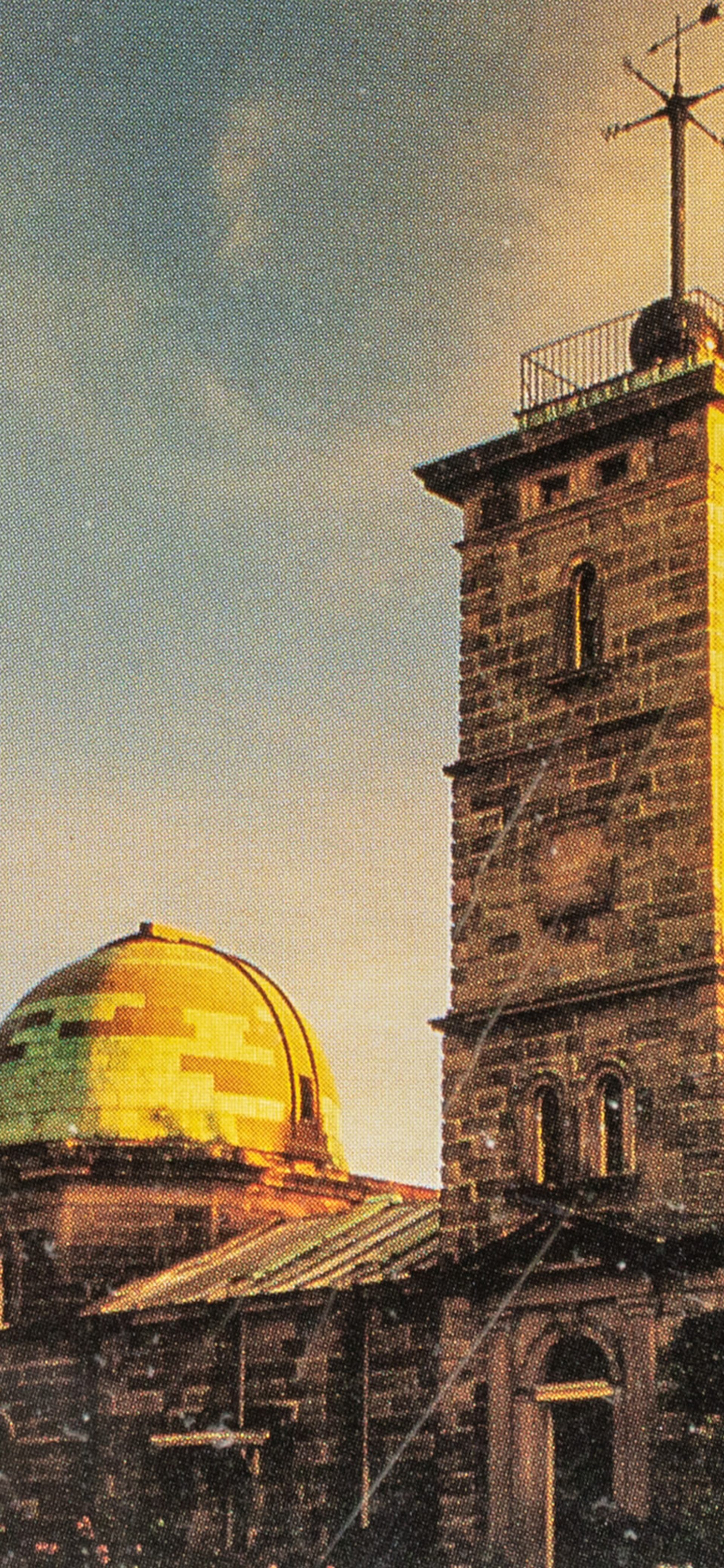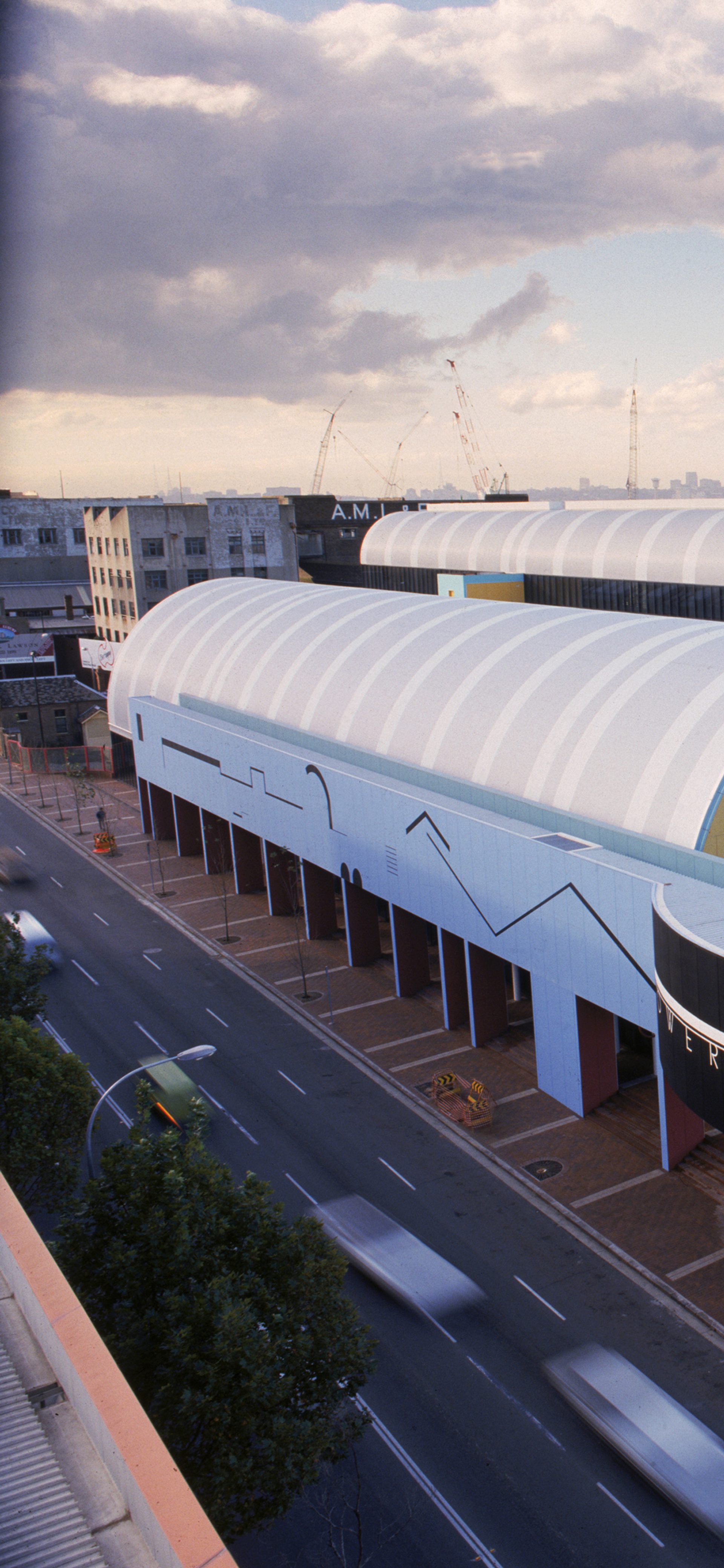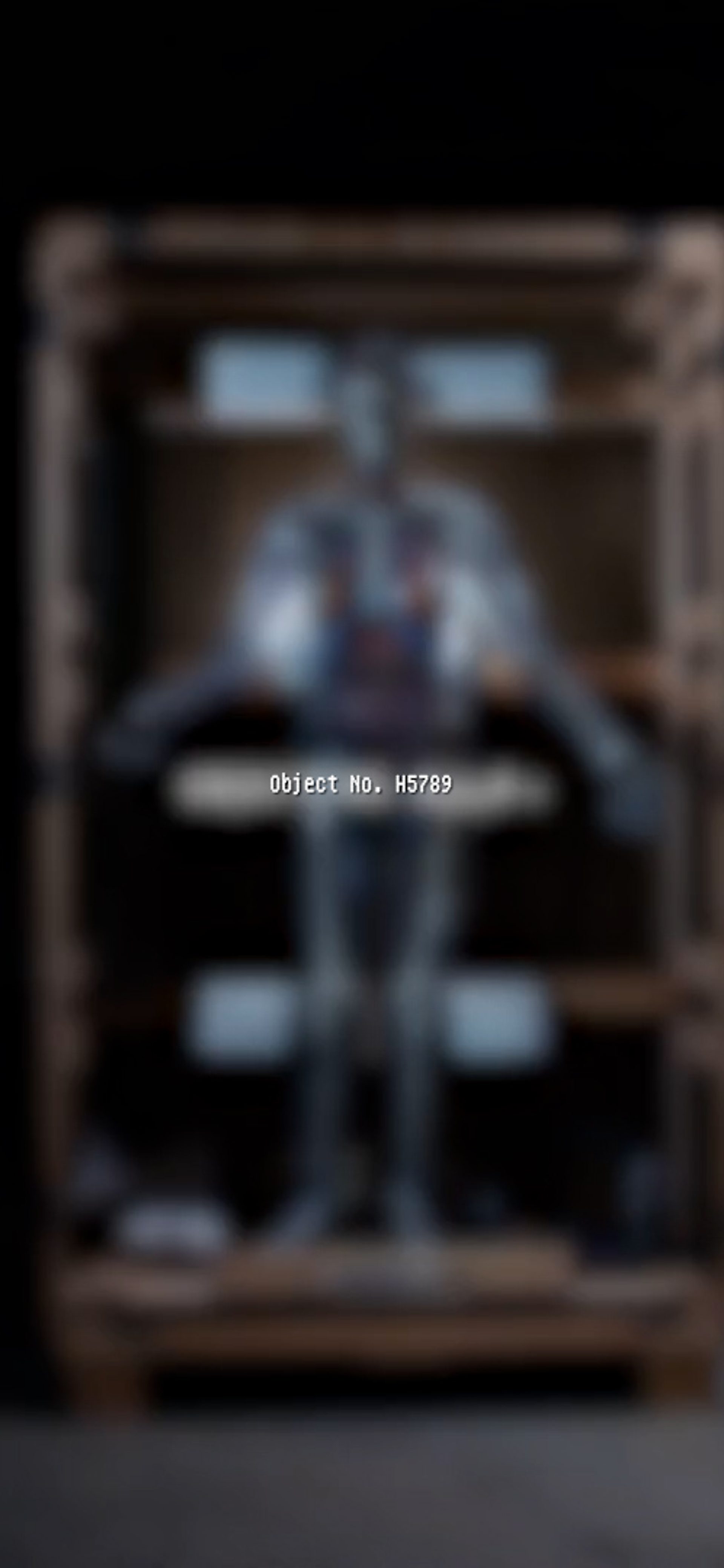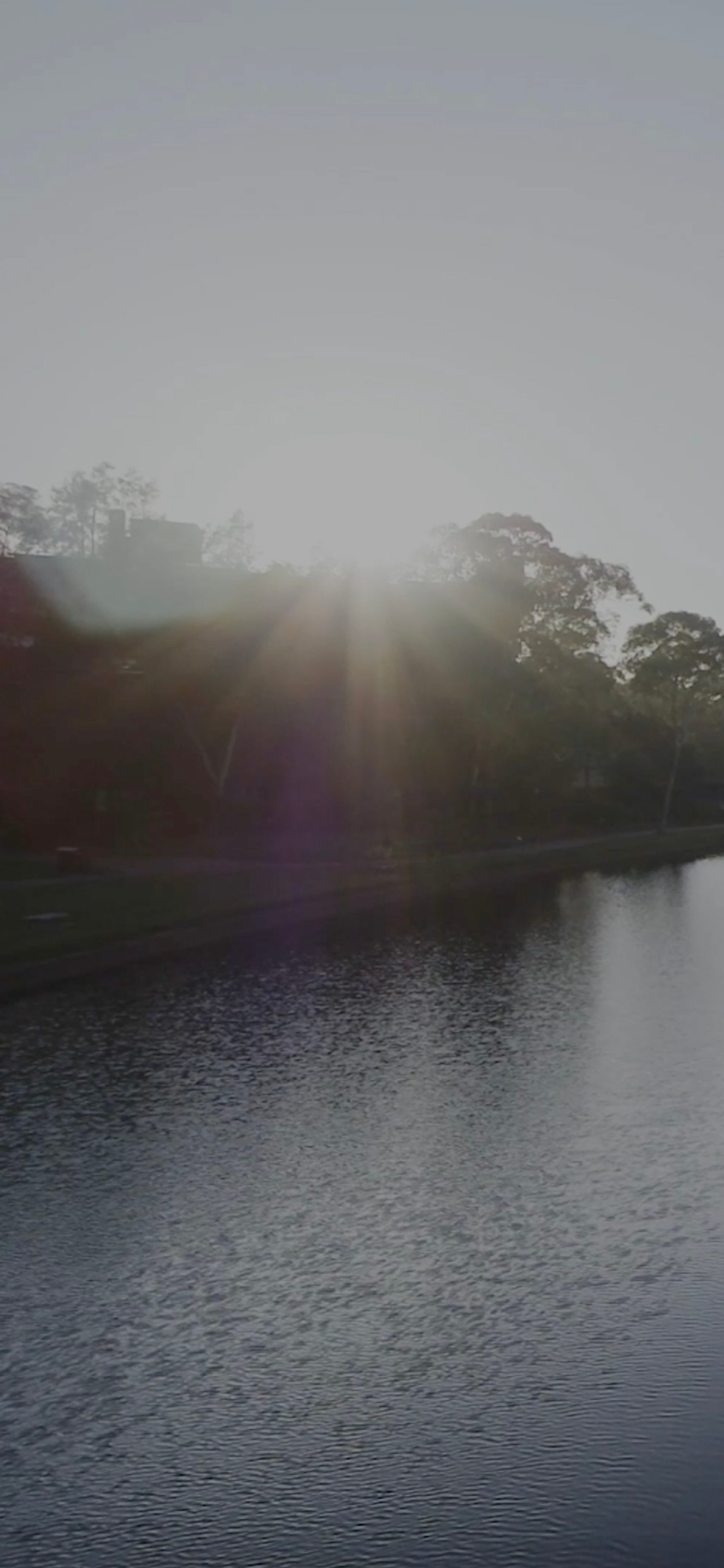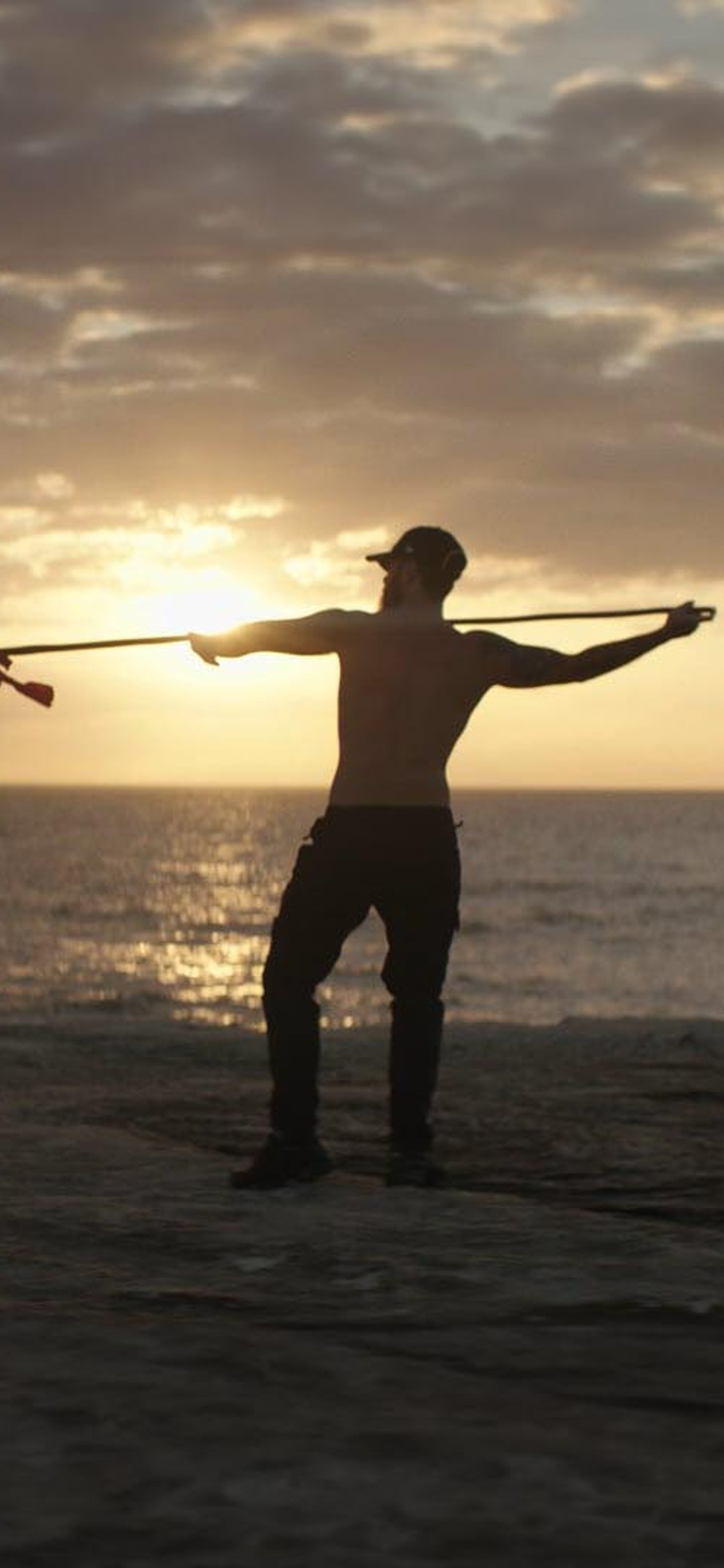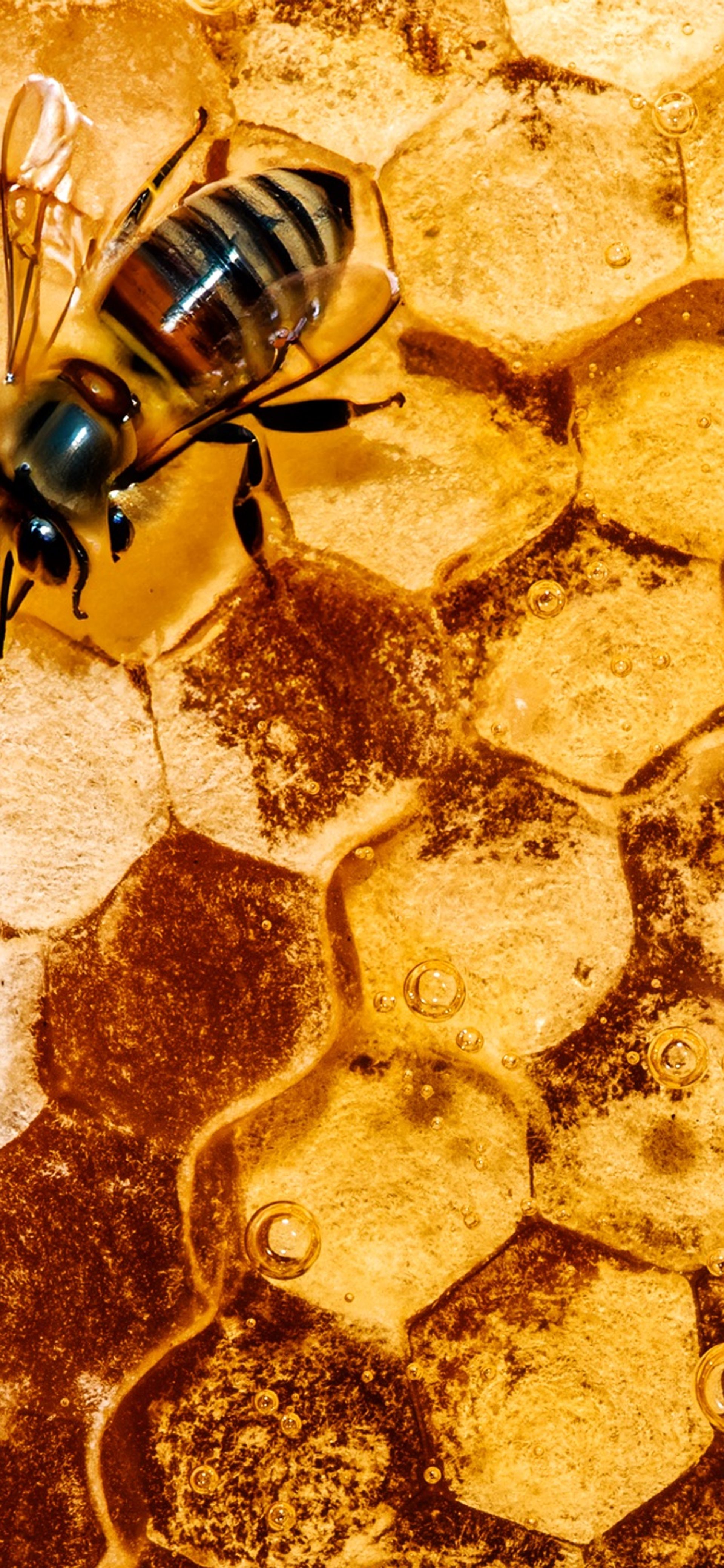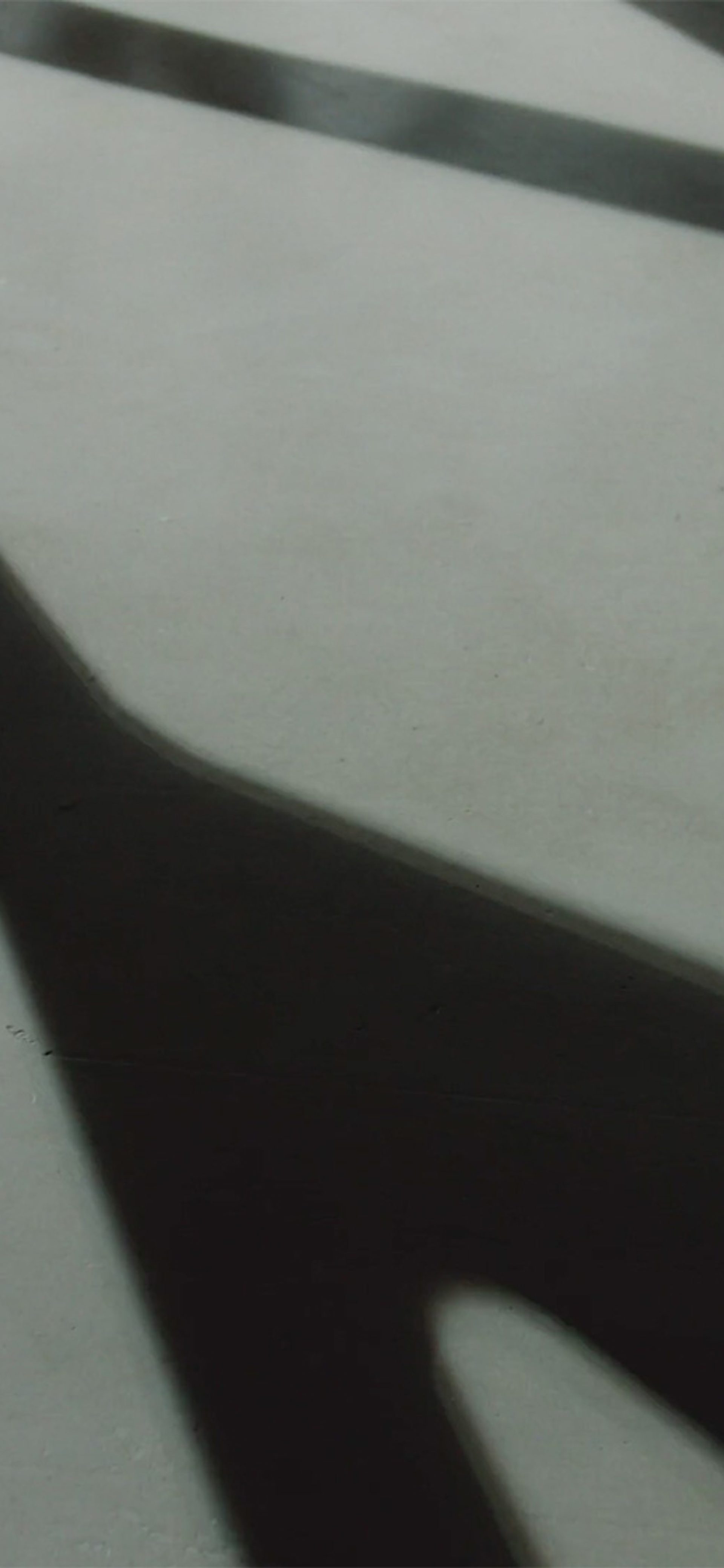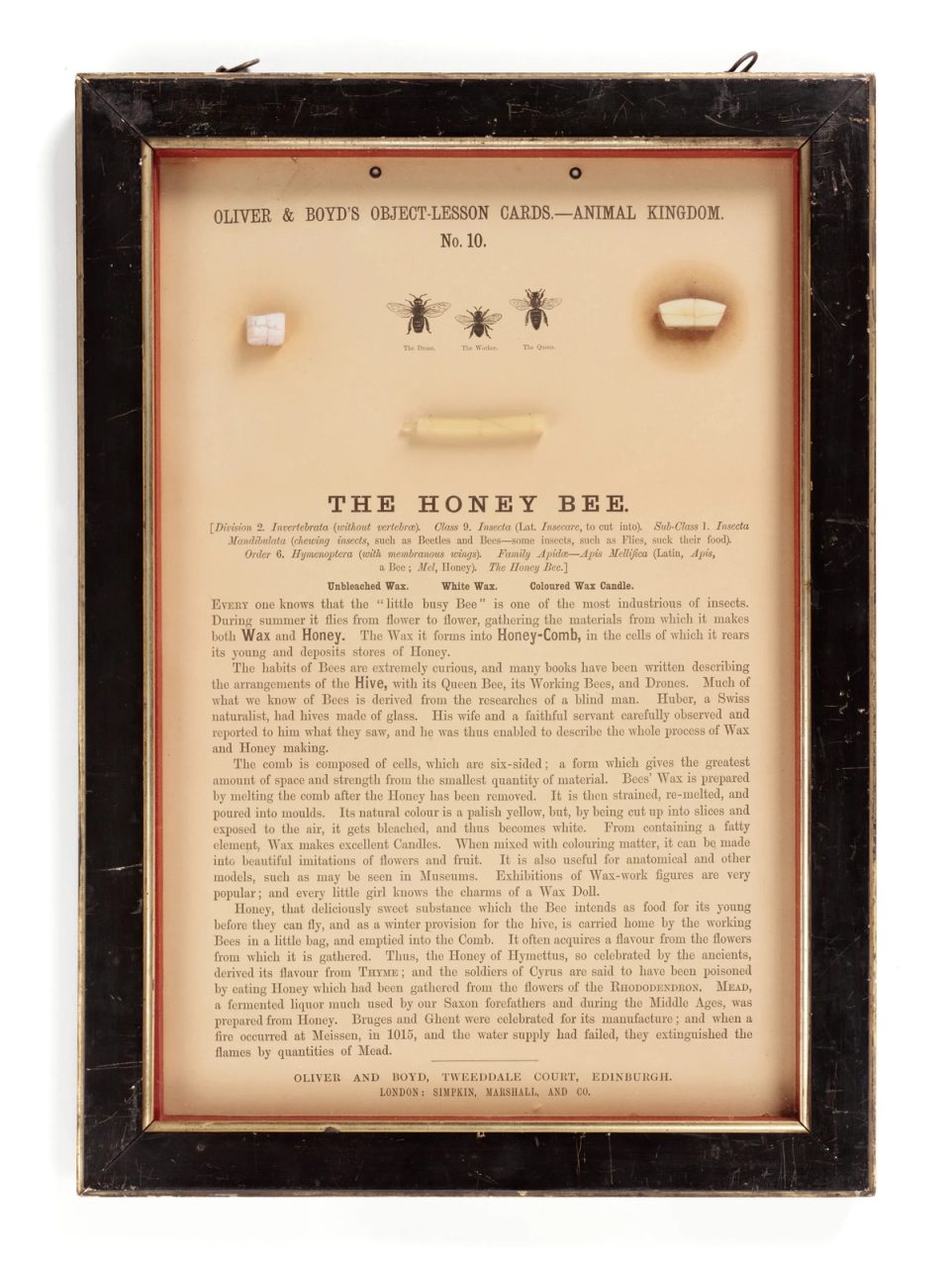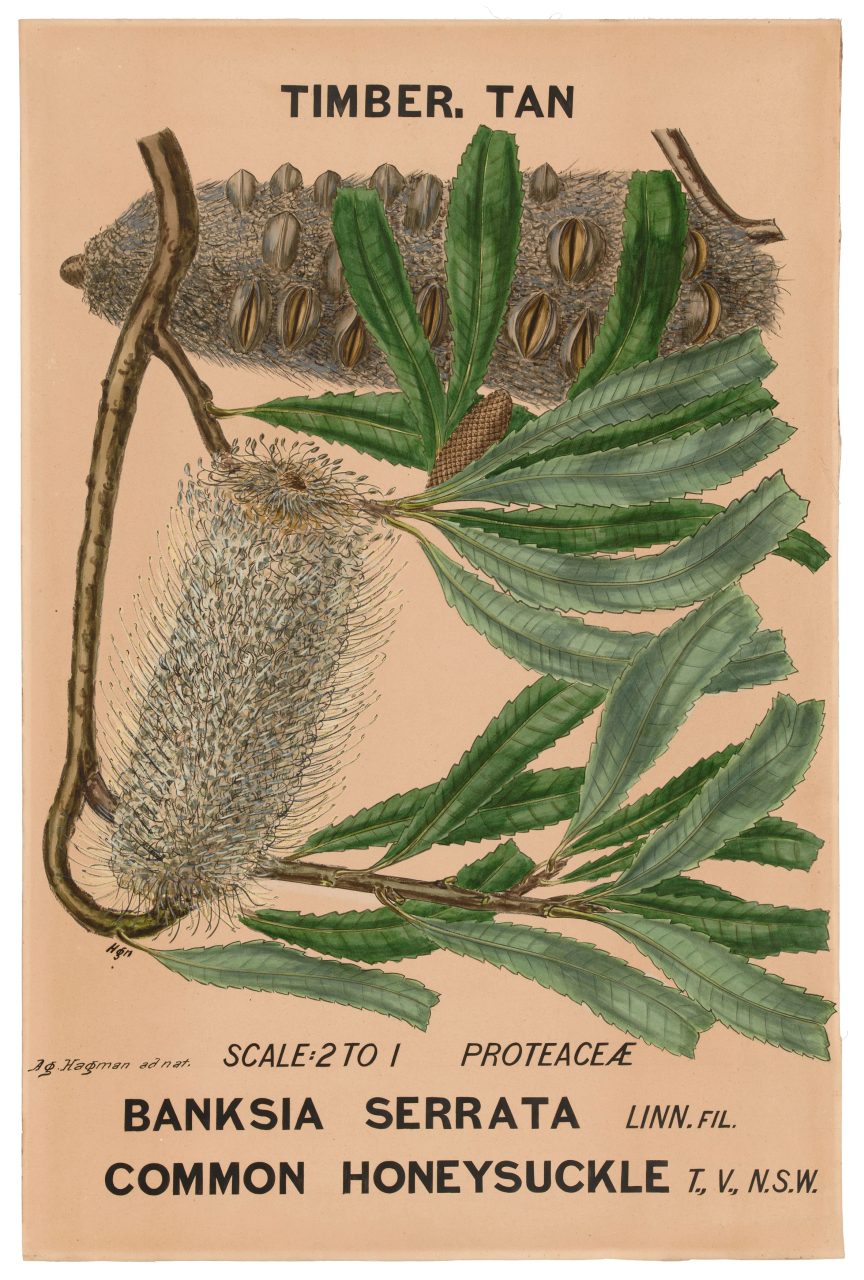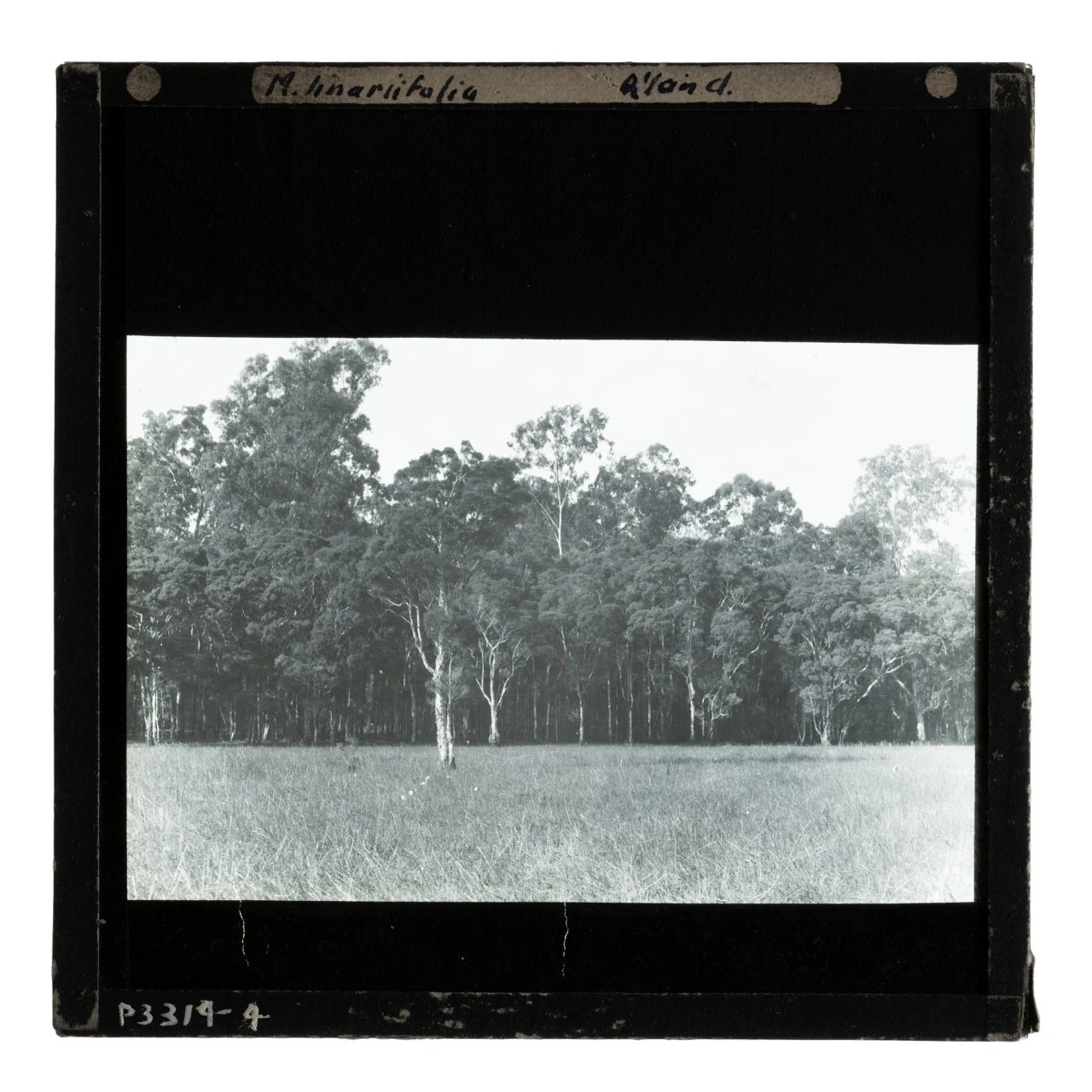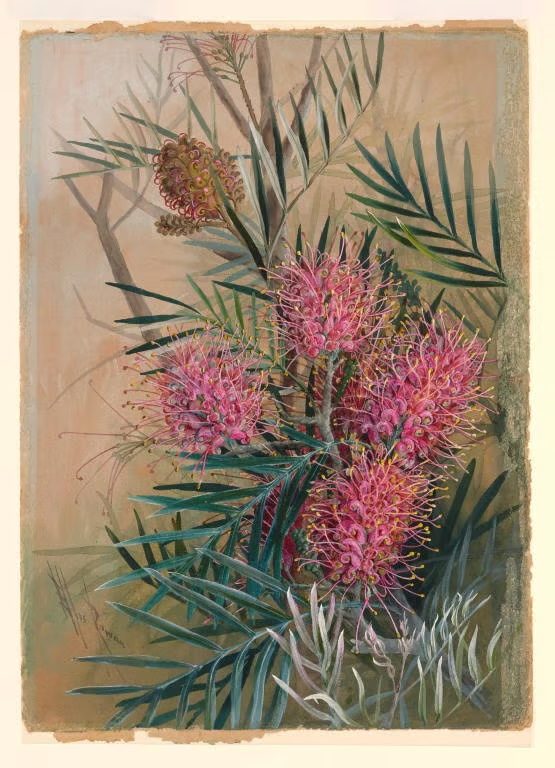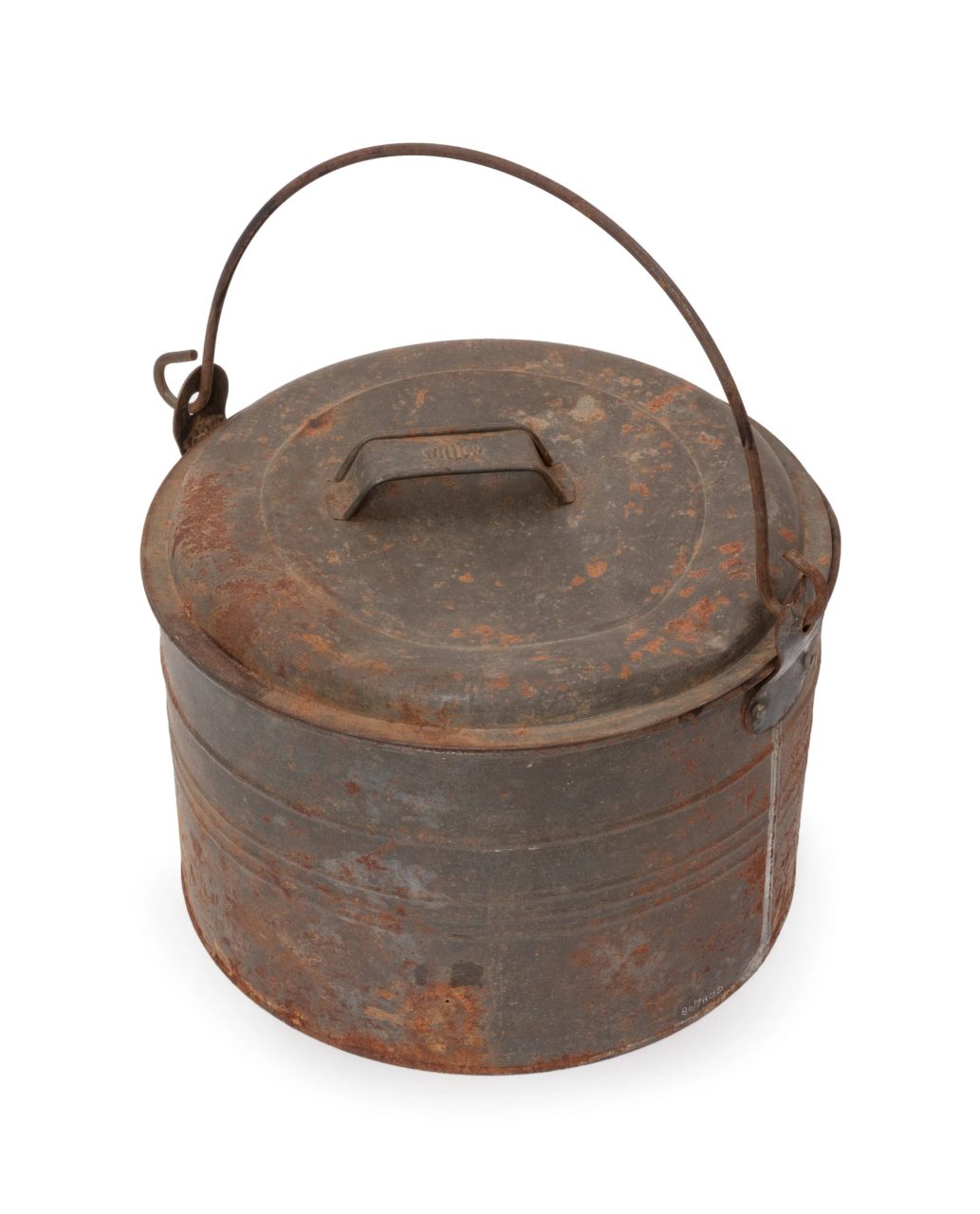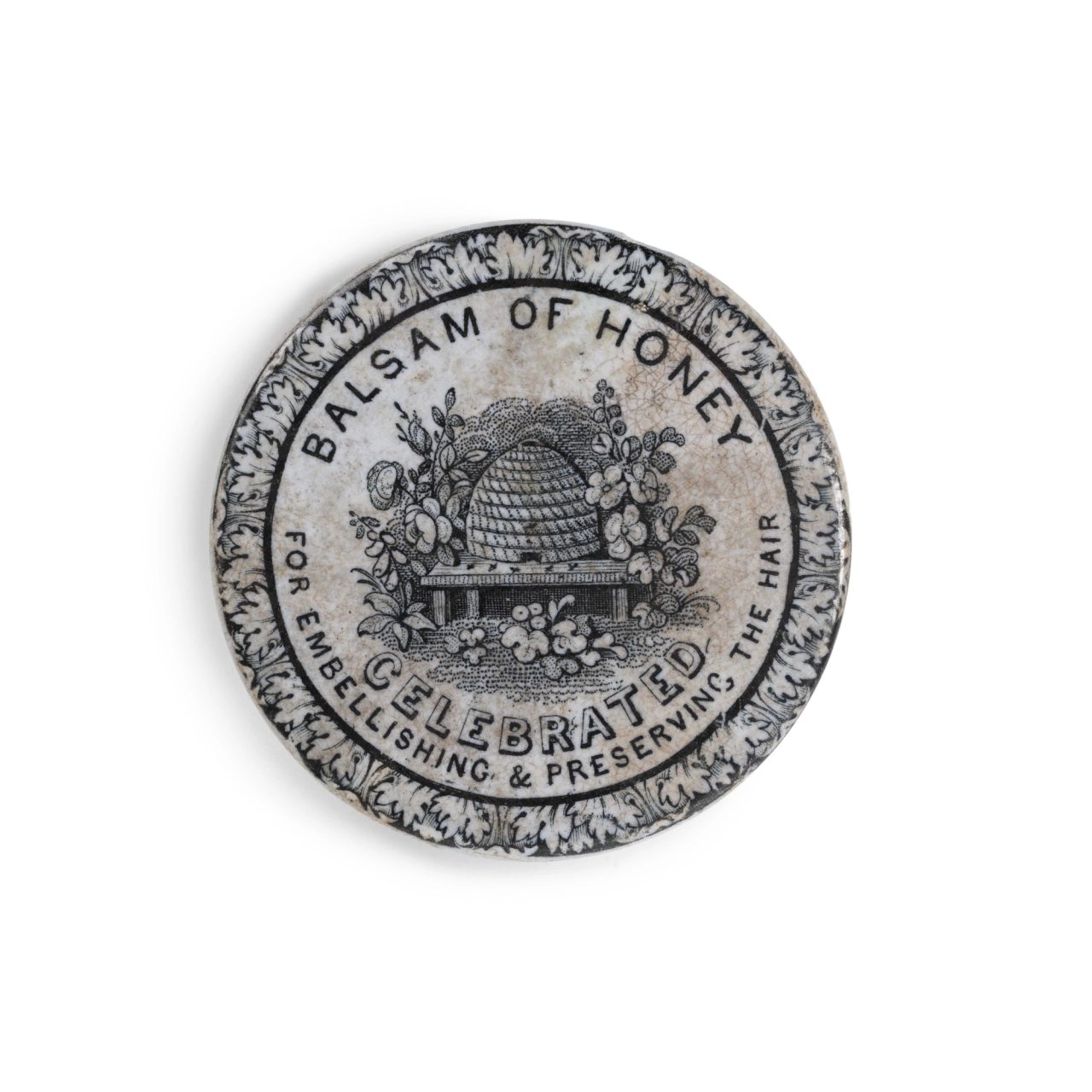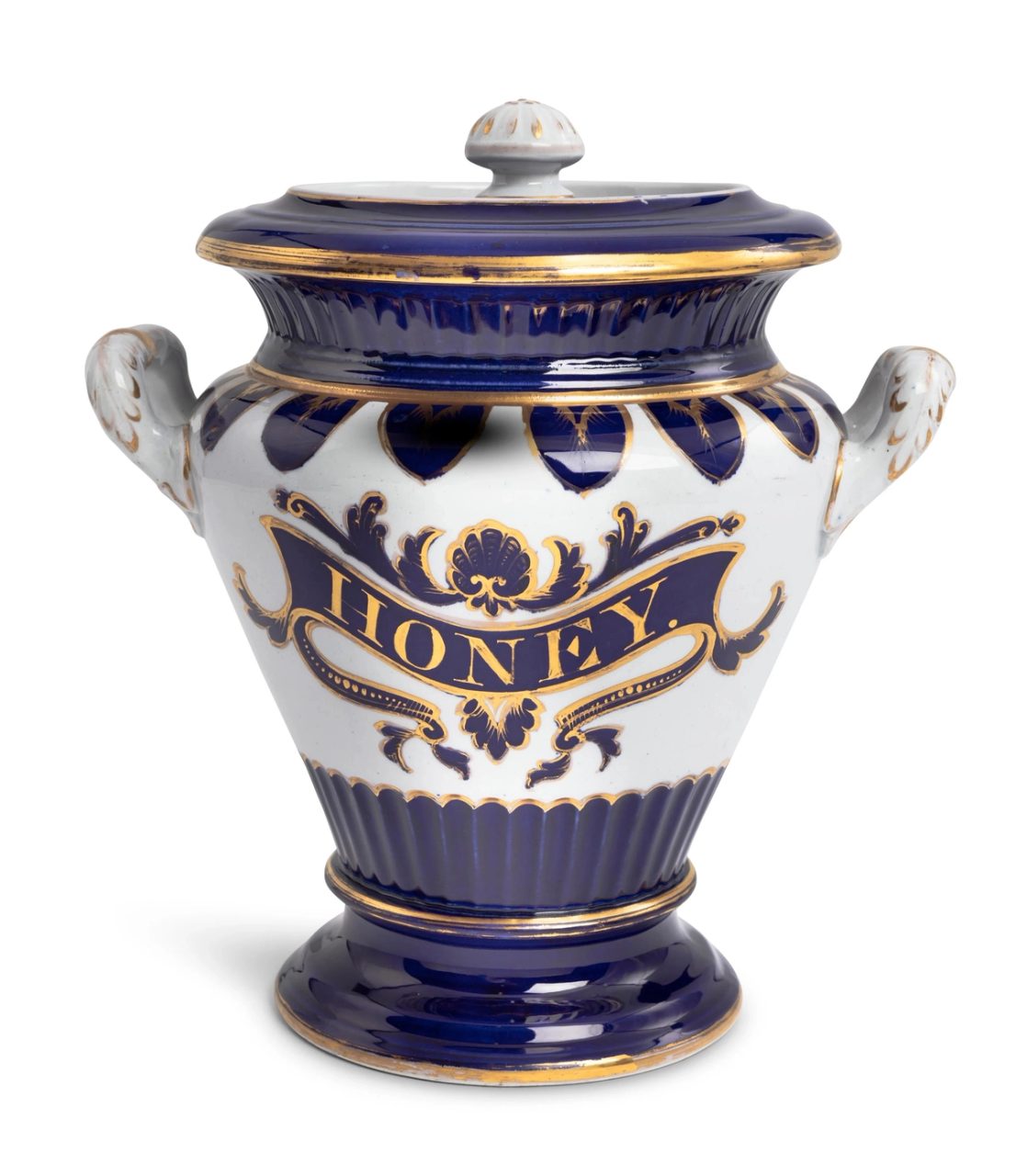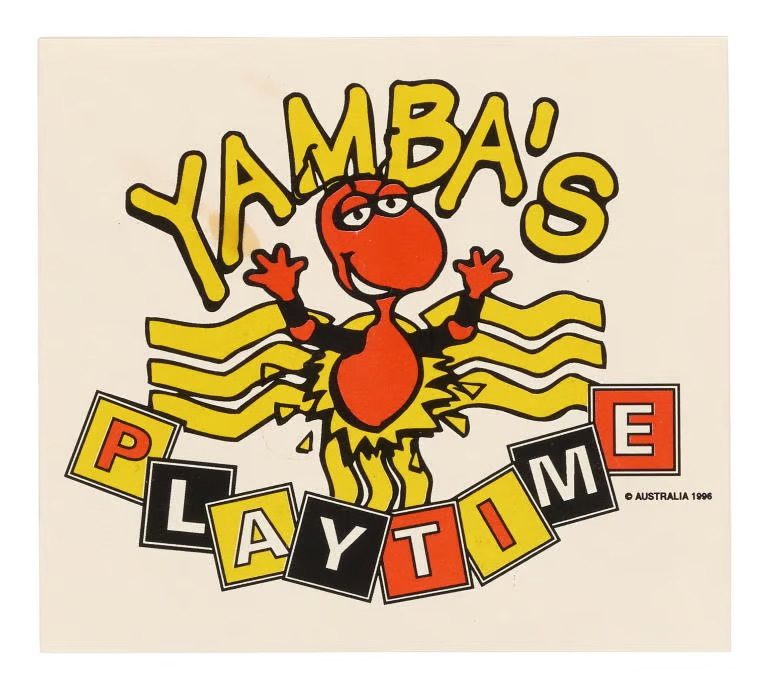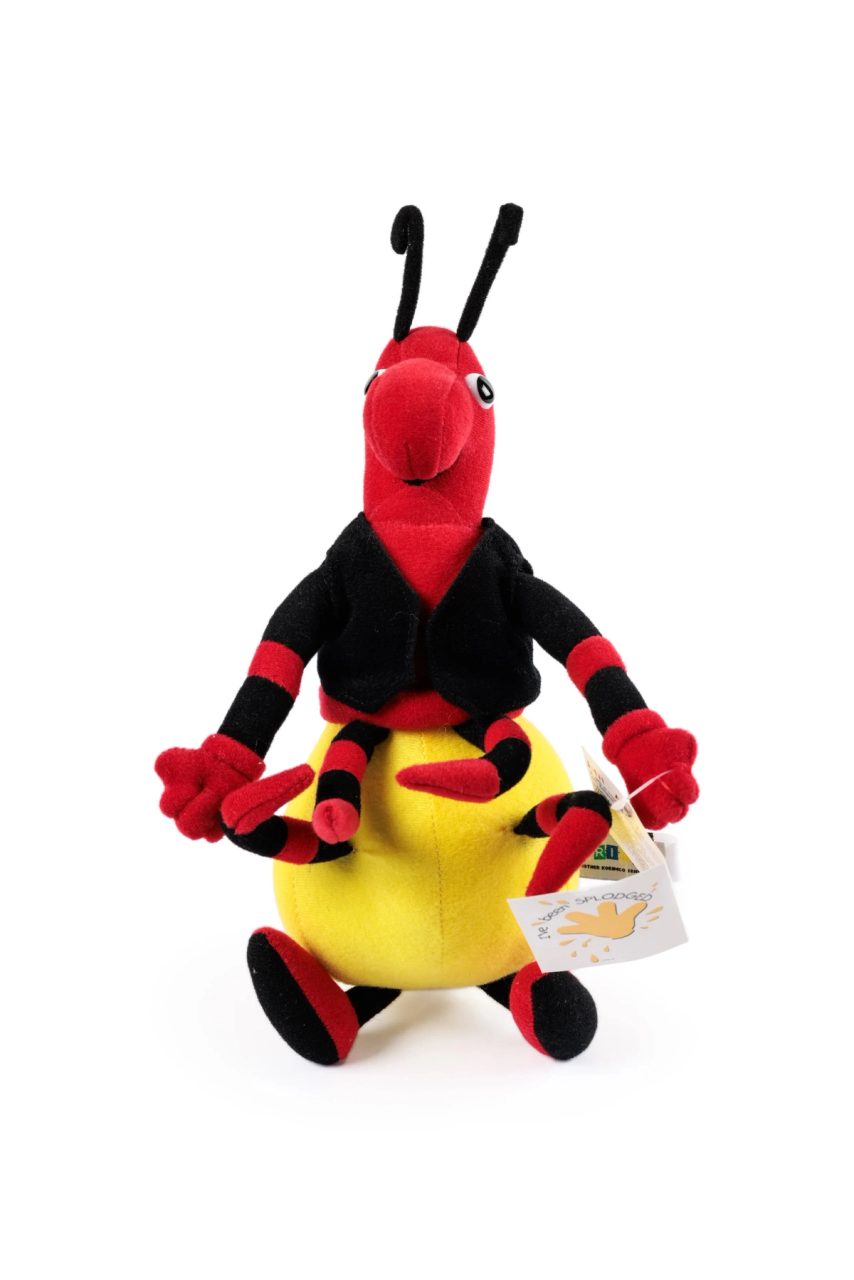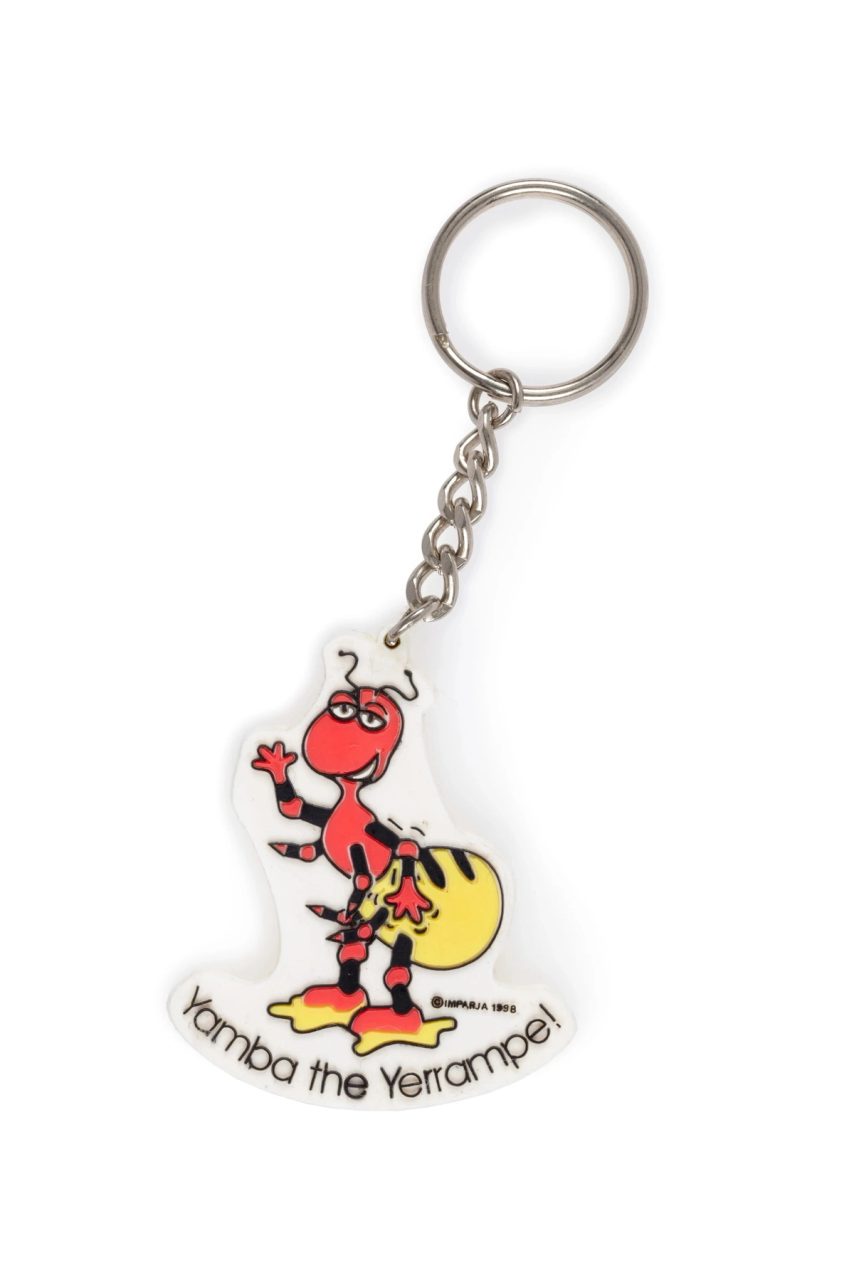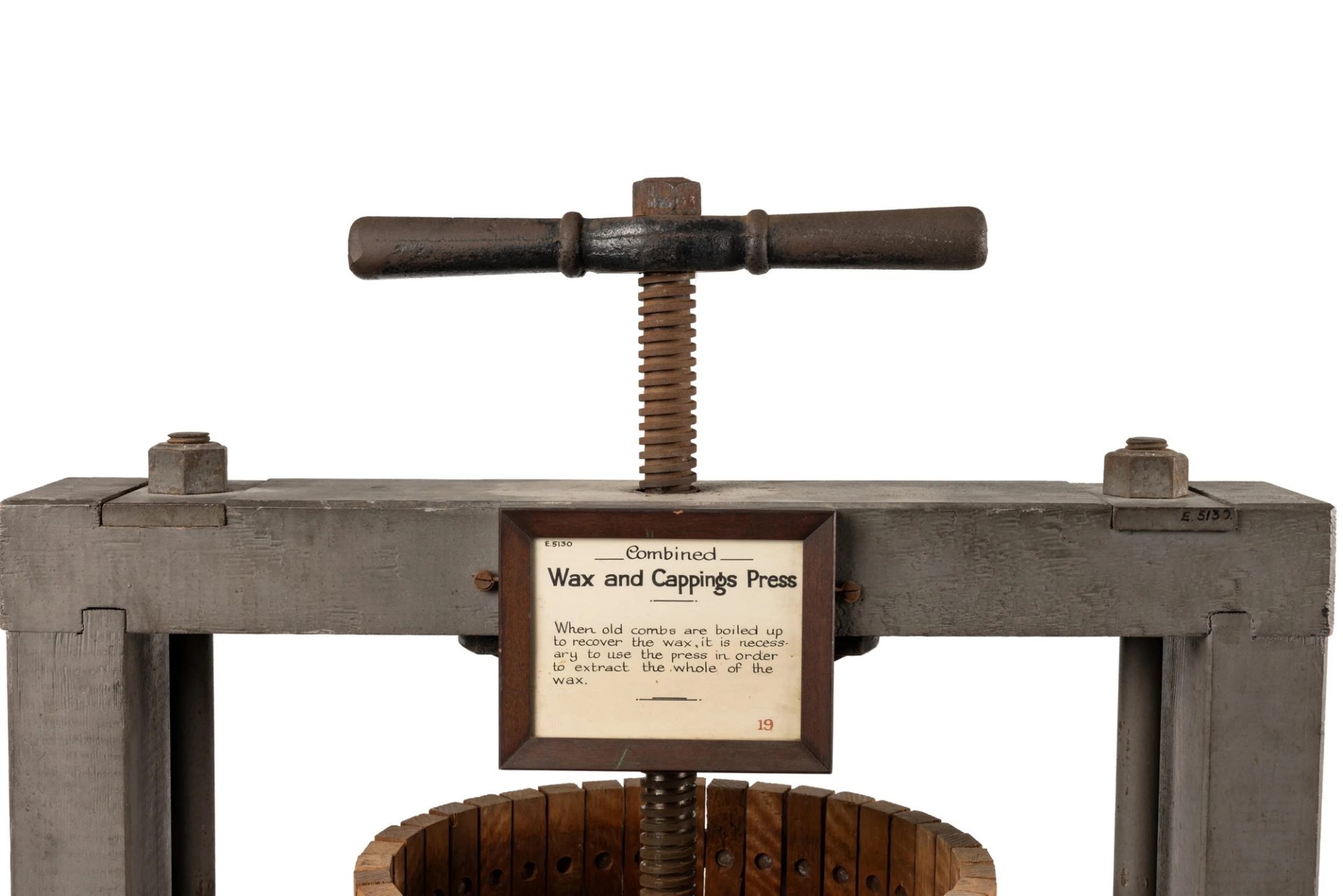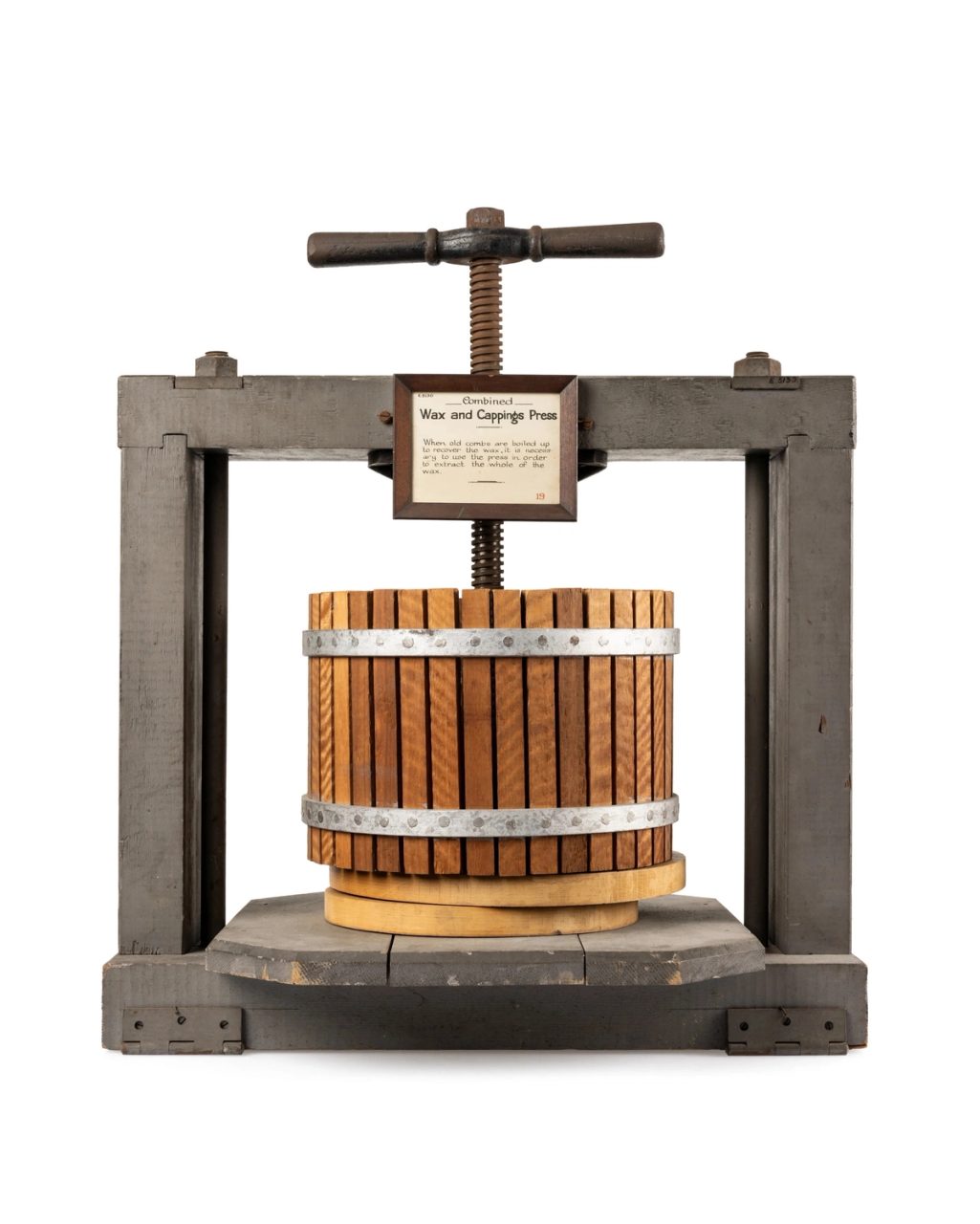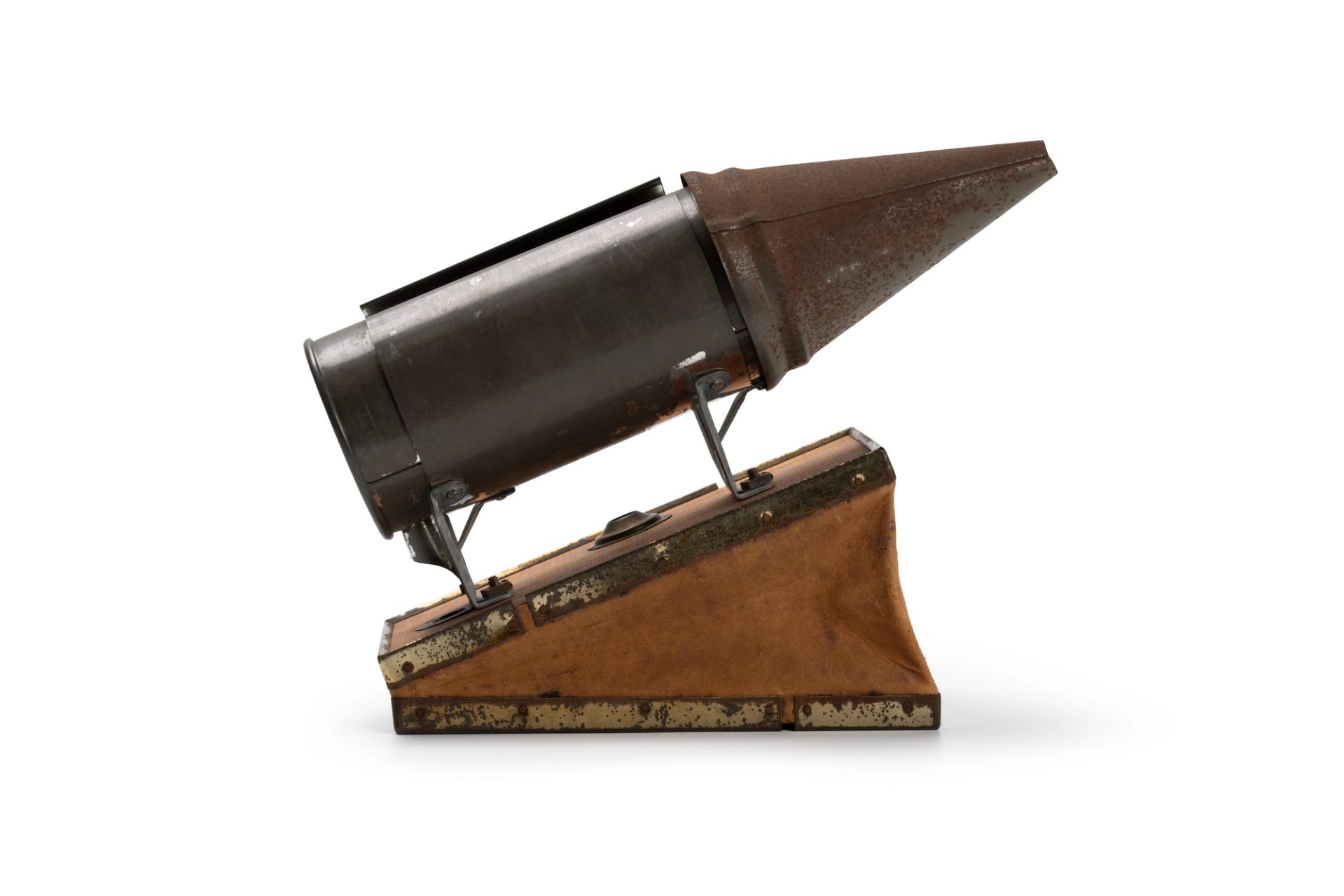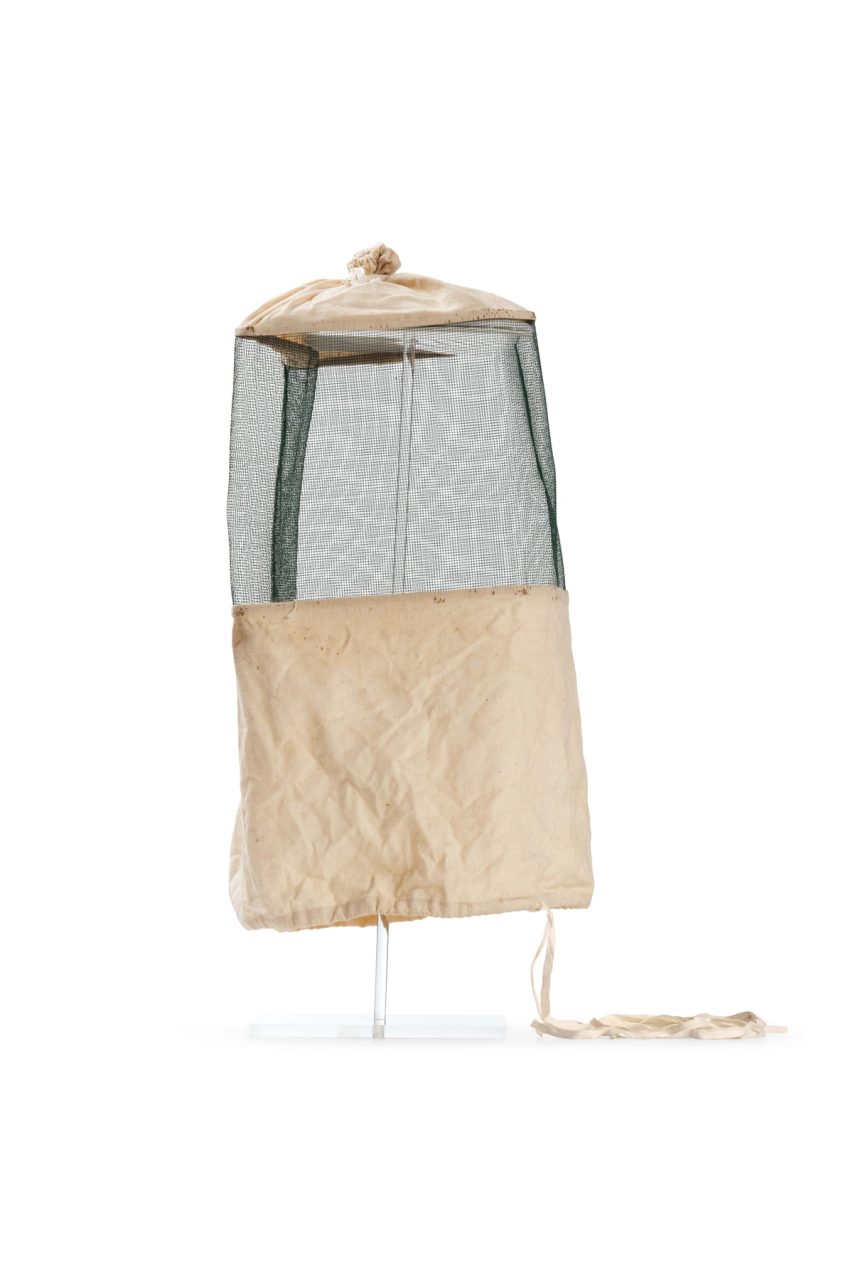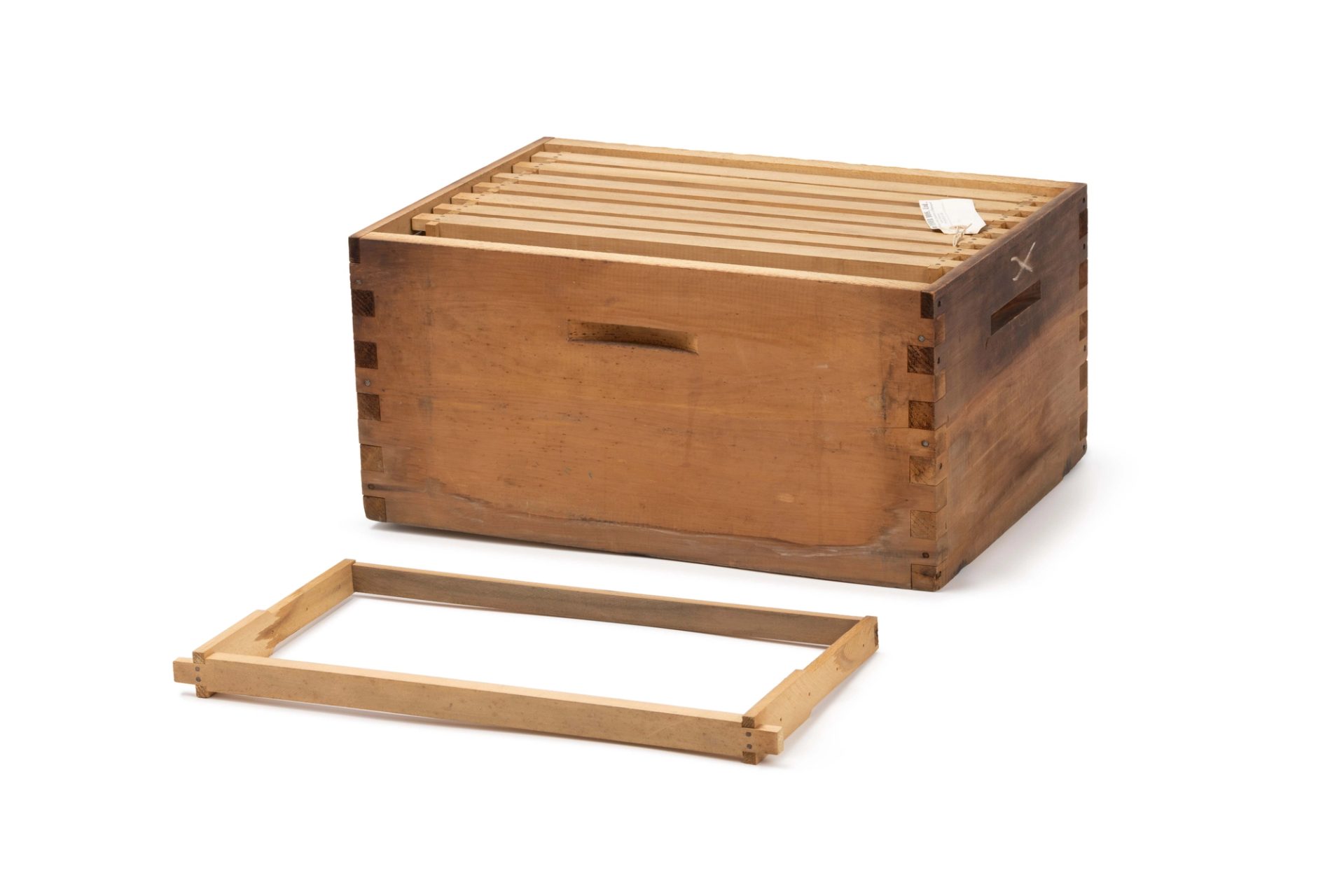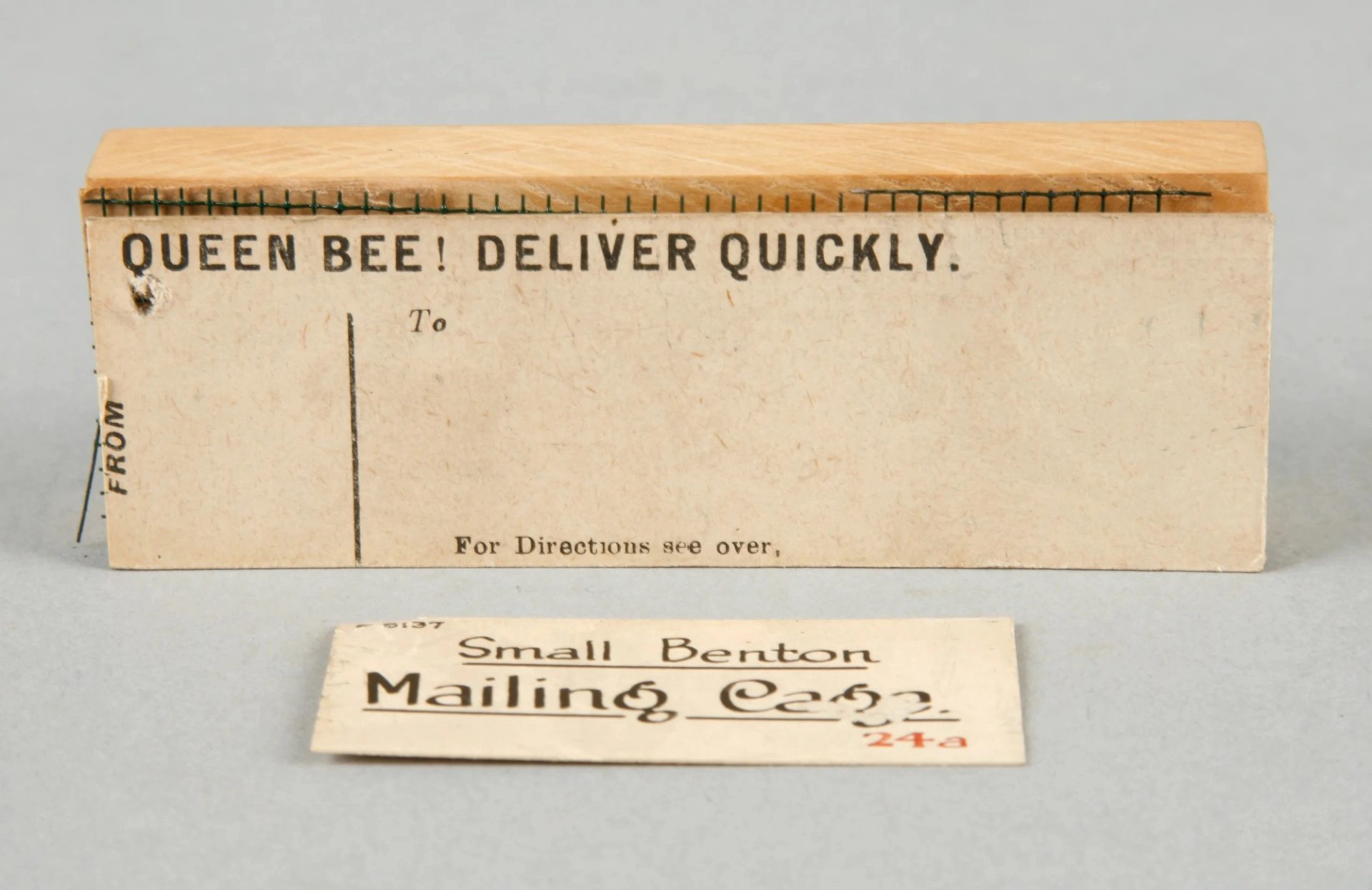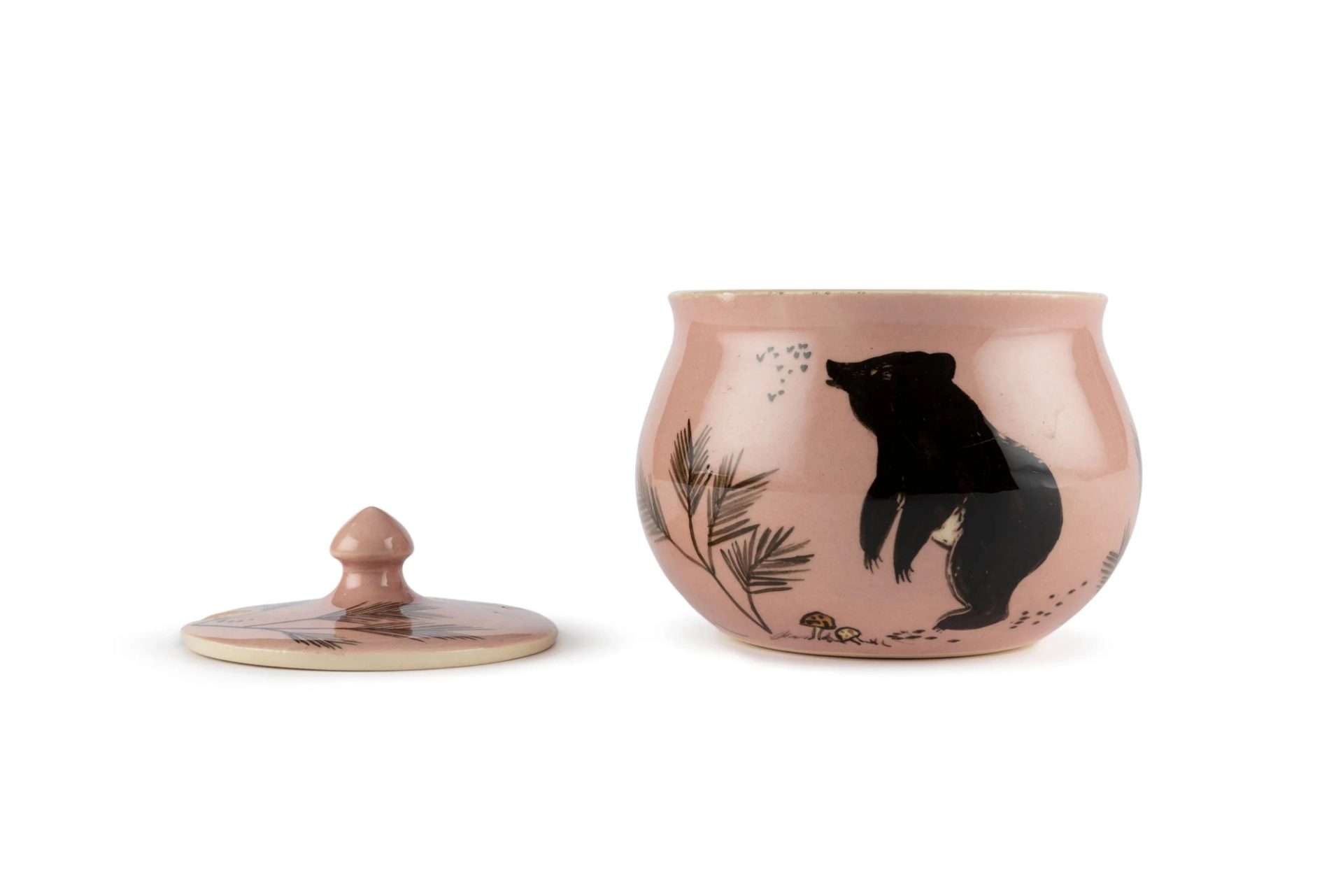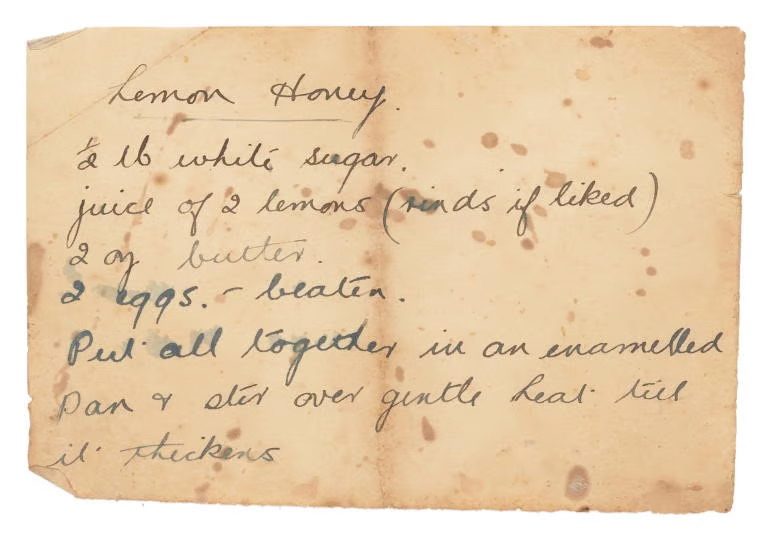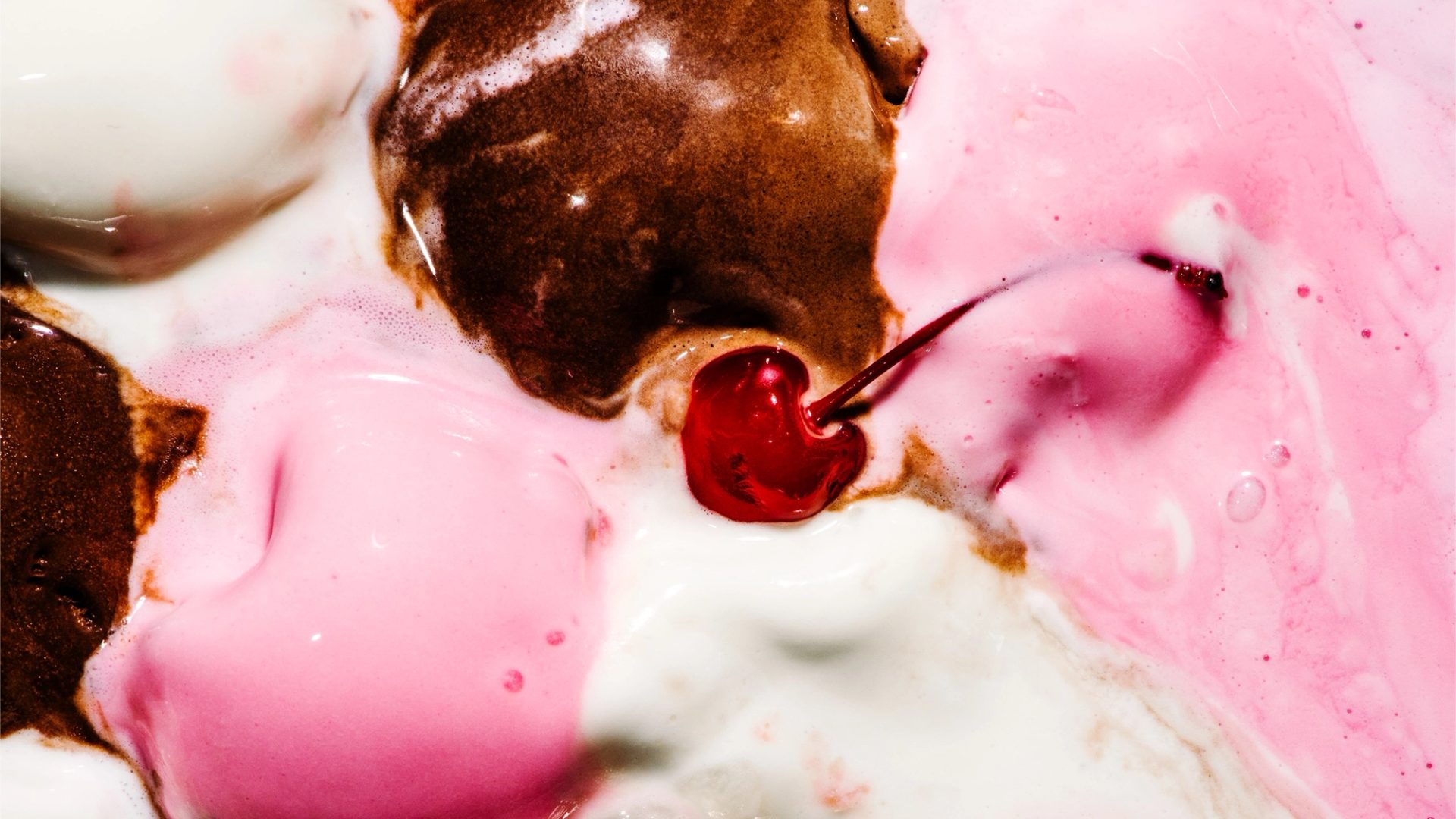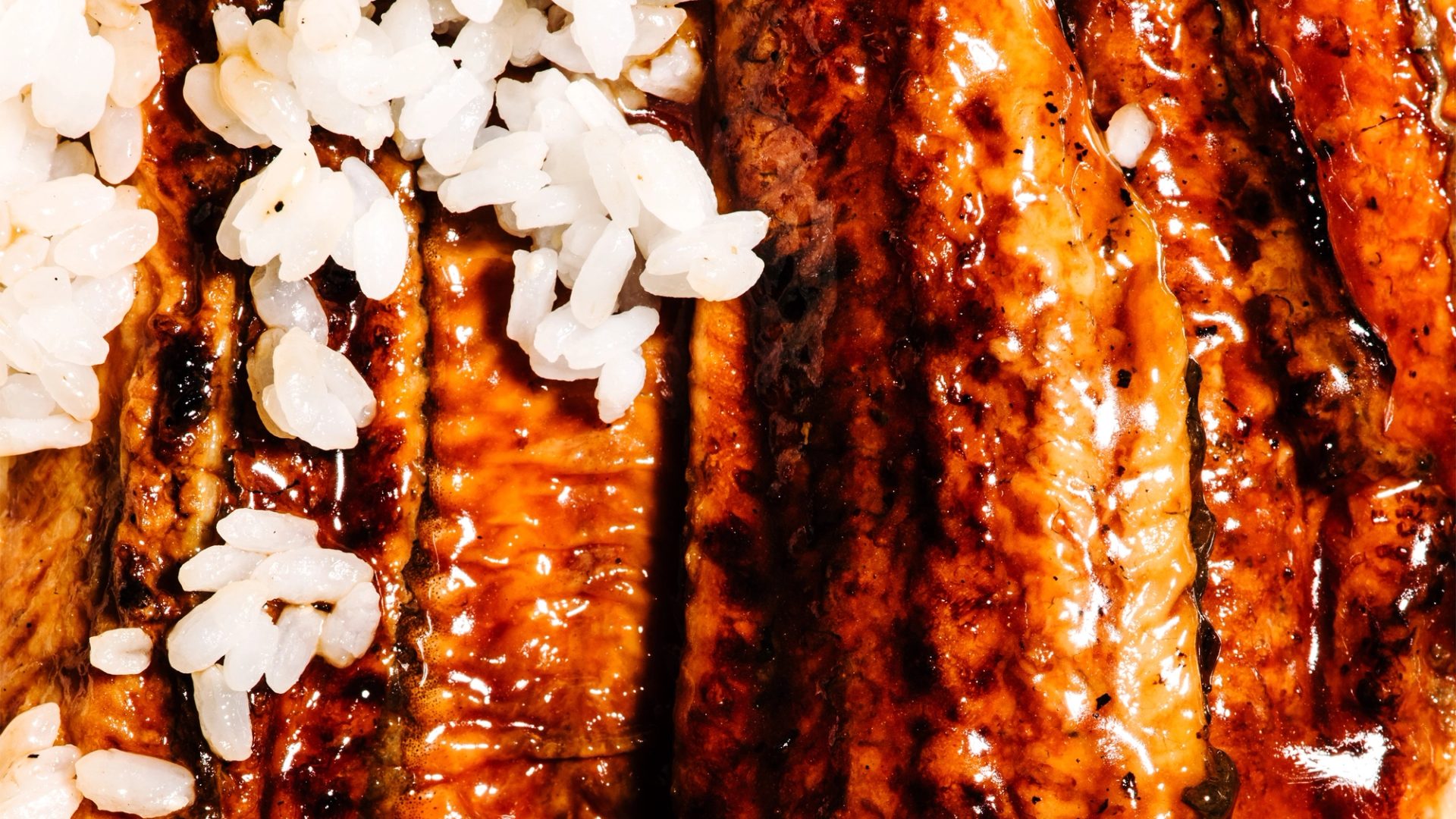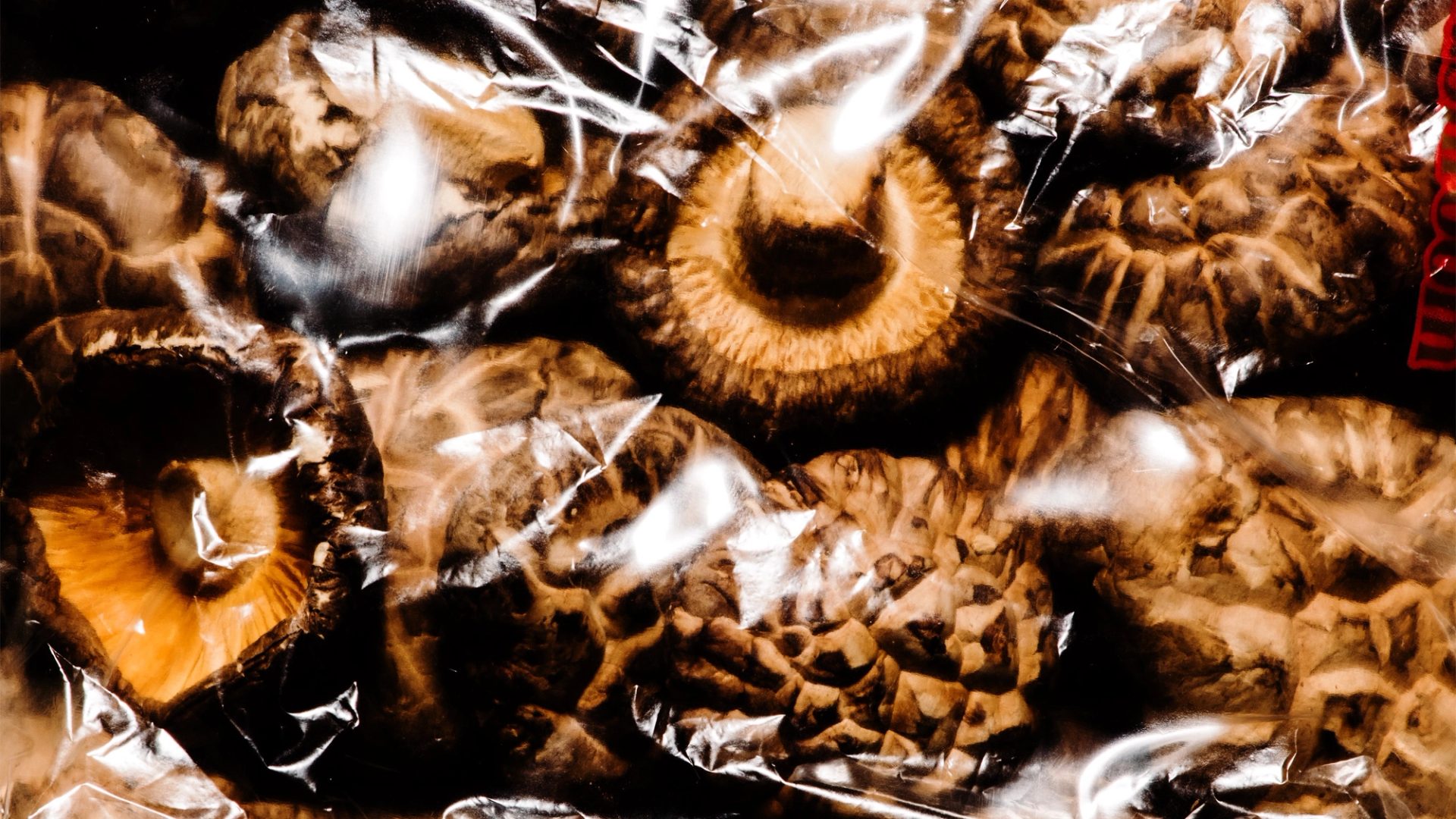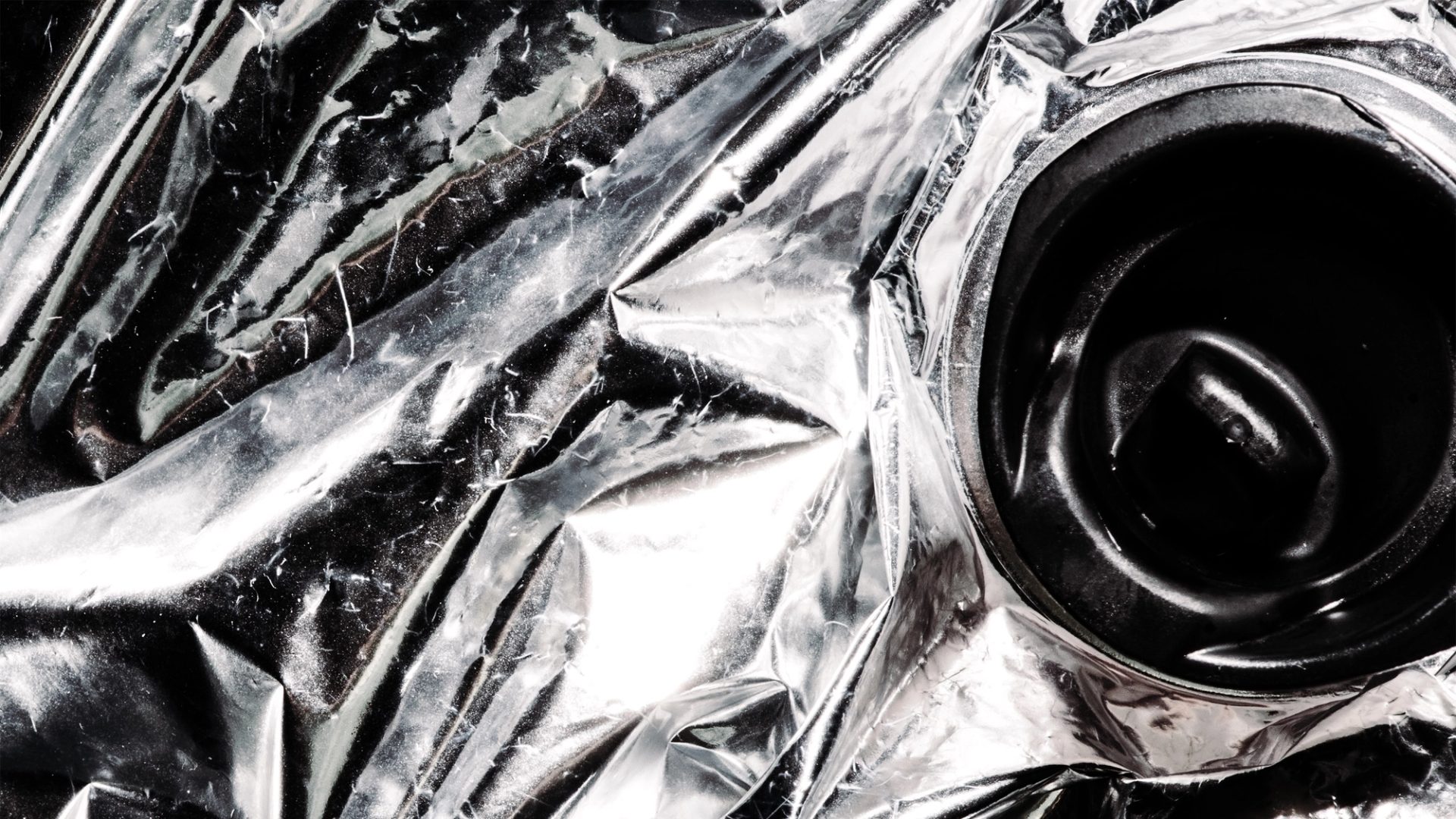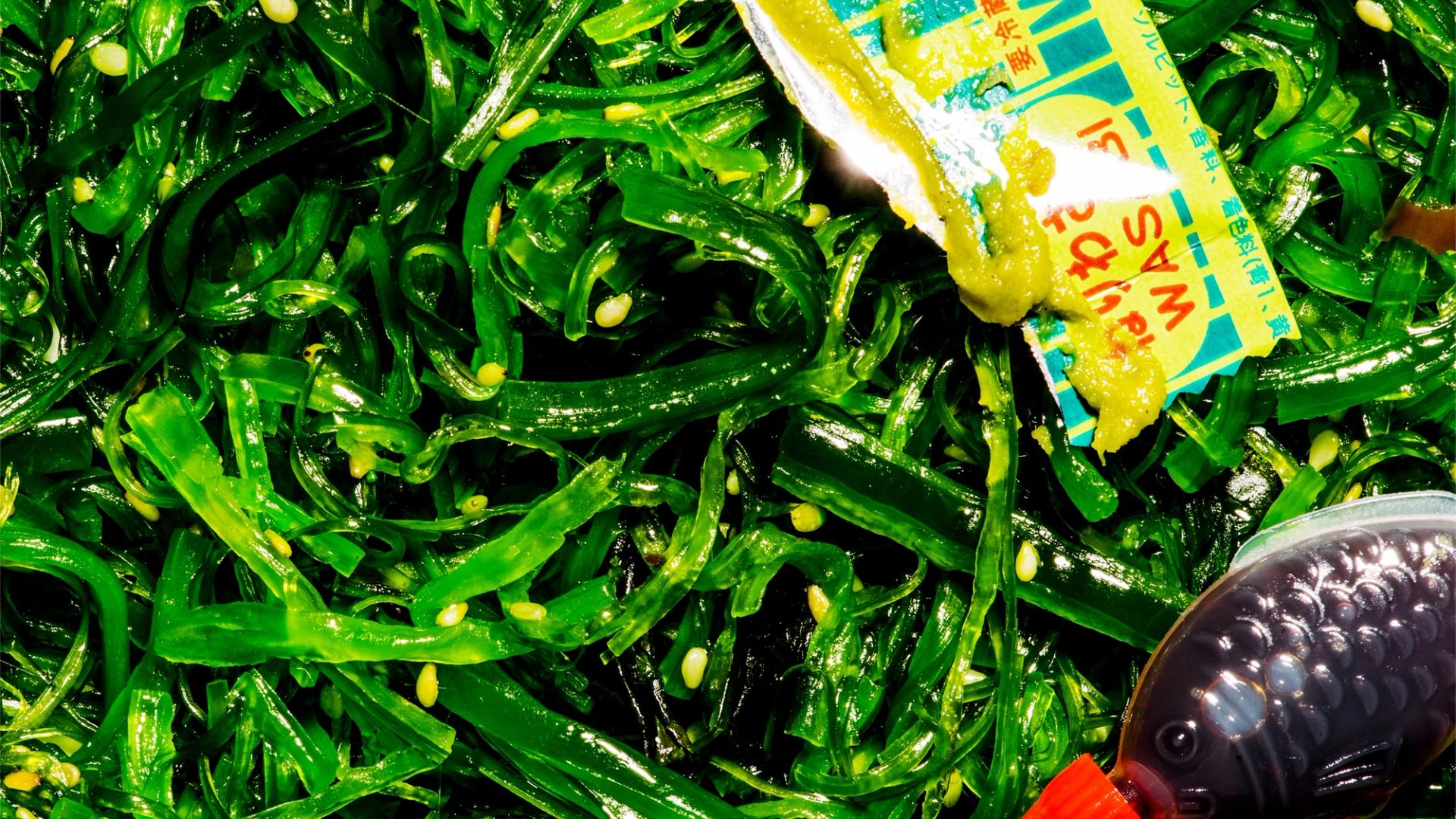Honey

Culinary archive podcast Season 2
Join food journalist Lee Tran Lam to explore Australia’s foodways. Leading Australian food producers, creatives and innovators reveal the complex stories behind ingredients found in contemporary kitchens across Australia – Milk, Eel, Honey, Mushrooms, Wine and Seaweed.
Honey
Australia is home to one of the world’s oldest honey cultures. For thousands of years, Indigenous people have harvested honey from sugarbag bees and honey ants which inspired kids TV and Japanese comic books. Australia’s native sweeteners probably predate the honey found in Egyptian tombs, which still proved edible 3000 years after it was buried. Contemporary Australians have found multiple uses for honey, whether in our food, on our skin or in our hair.
‘For centuries, beekeepers kept beehives on platforms in those trees to keep them away from bears. Look at the bark and you can literally see the scars from bear claws as they're trying to climb these trees.’
Transcript
Lee Tran Lam Powerhouse acknowledges the Traditional Custodians of the ancestral homelands upon which our museums are situated. We pay respects to Elders, past and present, and recognise their continuous connection to Country. This episode was recorded on Gadigal, Yawuru and Wurundjeri Woi Wurrung Country.
My name is Lee Tran Lam and you're listening to season two of the Culinary Archive Podcast, a series from Powerhouse Museum.
Located in Sydney, Powerhouse is the largest museum group in Australia. It sits at the intersection of the arts, design, science and technology with over half a million objects in its collection including a honey bee lesson card from the 1880s; a handwritten lemon honey recipe; and tableware featuring Cupid stung by a bee. The collection charts our evolving connection to food.
The museum's Culinary Archive is the first nationwide project to collect the vital histories of people in the food industry, such as chefs, producers, writers and restaurant owners who've helped shape Australia's taste and appetites. Today we're talking about Honey.
Nic Dowse For centuries, beekeepers kept beehives on platforms in those trees to keep them away from bears. Look at the bark and you can literally see the scars from bear claws as they're trying to climb these trees.
Dianne Appleby We never had hospitals, nurses, doctors. We had no chemists. We had to make our own medicine. You want good medicine, you want natural bush honey.
Mike Butler People have been eating honey for a very, very, very long time, and our whole existence as a human species is linked to the bees. Without the bees, we're gone.
LTL Australia's home to one of the oldest honey cultures in the world. For thousands of years Indigenous people have hunted the golden liquid left by sugarbag bees. And the honey ants they harvested have inspired kids TV and Japanese comic books. These native sweeteners probably predate the 3000 year old honey kept in Egyptian tombs, which still proved edible when found by archaeologists in 2015. In Australia today, we're using this sweet substance in many creative ways: as a sugar alternative in recipes; a treatment for wounds and hay fever; and even to mend objects.
ND Hi, my name is Nic Dowse. I'm the founder of Melbourne-based urban beekeeping collective Honey Fingers. I work with artists across various disciplines — photography, sculpture, food — and we always work around bees. We've done ambient recordings with beehives on rooftops for our listening parties, worked with sculptors and ceramicists to create hybrid works, things that have been broken and we give them to bees to, quote, ‘mend’. We've written stories with bees; we’ve travelled the world documenting traditional beekeeping practices in the honey forest in Turkey. Anything to do with bees essentially.
LTL When food journalist Mike Butler was younger, he had more to do with bees and honey than your average kid. Mike also appears in our Milk and Mushrooms episodes.
MB I grew up in a honey-producing family; my mum was a beekeeper. Before going to school, I spent pretty much a childhood sitting in a truck going around south-east Queensland, picking up beehives and delivering them, and following the flowering seasons of all the natives and the orchards. Look, I just thought everyone sort of grew up like this: being told by my mum and the other beekeepers, ‘This is what apple honey tastes like’, or ‘This is what banksia tastes like’. And seeing where the honey comes from makes a difference in the taste and the quality of the honey.
LTL Let's hear from someone else who has family connections to honey.
DA Hi, my name is Dianne Appleby. I am an owner of Walaja Raw Bush Honey up here in the Kimberley, on Yawuru Country. We've always had honey in our diet. Even the name of Walaja has been with us for decades. We were natural beekeepers. My parents taught us to respect the bees, the trees and all the surroundings because it was part of our survival, Indigenous people's survival. We were beekeeping for centuries.
LTL 7500 year old cave art in Spain depicts a hunter dangling off a cliff as they reach for a nest of bees; while ancient Egyptians refer to jars of honey in divorce contracts; and in Georgia, the oldest honey ever found was unearthed in a 5500 year old tomb.
In Australia, native bees have played a role in Indigenous culture. The blowing end of didgeridoos can be coated in beeswax from the sugarbag species. There are only around a dozen stingless bees in Australia and the sugarbag is one of them. I've tried sugarbag honey from Gubbi Gubbi and Yuggera Country and it has this amazing melodic ripple to its flavour. It's lively and rich, like caramelised apricots.
I wonder how different it is to the honey hunted in Spain 7500 years ago, or harvested in Slovenia today, where one in 200 people are beekeepers? Is its flavour like the honey from South Australia's Kangaroo Island, where Ligurian bees have been buzzing since they were sent from Italy in 1884? These South Australian hives have had official protection since 1885, and Kangaroo Island now has the oldest bee sanctuary in the world. Surely the honey there has a unique sweetness.
MB I particularly like ironbark honey, because it's got a body and a robustness that commercial varieties of honey don't have. It's got the character of the land. Like apple honey’s got a wonderful darkness. Even more importantly, it's got crystals in it. It's a textural thing. It's not a sugar syrup. People have been eating honey for a very, very, very long time, and our whole existence as a human species is linked to the bees. Without the bees, we're gone.
LTL Without bees pollinating our crops, we wouldn't have staples like almonds, blueberries and avocados. In the Kimberley, bees buzz around paperbark and melaleuca trees, bloodwood flowers and melon farms to produce Dianne's honey.
DA The bees have an amazing journey of bringing good fruits to your table. They work on the farms collecting nectar, which is so creamy. The bloodwood is growing everywhere right now. It's called Man-gala season in our language. The Man-gala season draws the flowers to bloom. We also have the native grevillea which is a red flower, and our beautiful bees, they say, ‘Oops, the bloodwood’s doing really good. But what about these flowers? They look all right too, they're nice.’
LTL There's a strong connection between honey and Country.
MB You don't have to grow this stuff yourself, but going to somebody that’s grown it gets you connected to the provenance of this thing. Aboriginal philosophy teaches you about relationships. I was told by one of the aunties that there's two relationships in the world. First one is your relationship with Country, with the land, and the second one are relationships with other people. But the second one is always contingent on the first.
LTL We see this happening on Yawuru Country with Walaja Broome Bush Honey, where Dianne is teaching the next generation of beekeepers in her family.
DA The bees, they need a family. It's all a vision of my husband, David Appleby. His passion for the bees brought us to this place where we're now talking from a modern way of caring for Country, a modern way of caring for bees. This cultivation of honey farming, honey collecting, honey dreaming stories, working with bees, this has been with us for centuries. Generations of generations. When we say to look after Country, it's called ‘Walyjalajala buru jayida jarrinygun buru’. It said in the language of Yawuru, where we live. Caring for Country is so important to our environment and the people that come to live here, and they get to taste the Country through this honey.
LTL So has honey helped Mike connect with his Indigenous ancestry?
MB Unfortunately not. Mum was assimilated. I've come to my Aboriginality at an older age. They certainly didn't explicitly teach any of this. But it's funny because I'm now into bush tucker. I'm coming to realise how much stuff you can eat out there. And it's so different to how I was brought up as a little Aussie kid that was told, ‘Don't have anything from the bush because it'll kill you!’ That's how I think most Aussie kids were brought up. If you don't get it from the shops, it'll kill you.
LTL But honey is actually the opposite of that, and local honey has been used to heal for a long time.
DA It's like this liquid gold getting poured into your jar. Honey has so much healing with its properties.
LTL According to The Conversation, honey ants from the Central Desert have powerful antimicrobial effects which could help combat pathogens that resist antifungal drugs. Doctors might also be keen on honey from Indigenous stingless bees. Its medicinal qualities can be more powerful than manuka honey, that's why it's worth $200 a kilogram. People are willing to pay so much for honey that it's inspired a special kind of crime, with reports of honey fraud and bee heists making news headlines around the world. Honey is highly valued, especially for its health effects, and scientific research today is catching up with Indigenous knowledge about this traditional medicine.
DA My mother, who’s passed now, and my father are people who have lived off the land. She said, ‘We never had hospitals, nurses, doctors. We had no chemist or pharmacy. So we had to go and make our own medicine.’ You want good medicine — you want natural bush honey. You can take it orally and swallow it. It's very tasty for the palate. It's an energy drink, it's a healing drink, it's also a treat. It also can be used for the external healing on grazes and burns. Even animals such as the horses and the cattle.
LTL Smithsonian Magazine reports that honey appeared on a third of ancient Sumerian prescriptions and ancient Egyptians used the antibacterial liquid like natural bandages.
ND Types of honeys that are quite high in hydrogen peroxide are really great for treating infections and wounds. It's not going to bubble and go white when you apply it to a skin. They obviously aren't as intense as the hydrogen peroxide that you buy from the chemist. But what it's really, really good at doing is cutting through the bacterial slime that is produced around infected wounds. It actually dries it out. It's been used as a medicinal treatment for millennia and it's really interesting that they're starting to use it for antibiotic resistant infections. It's a very, very handy medicine.
LTL You'll find a 19th century object called ‘Balsam of Honey’ in the Powerhouse Collection. It makes the ye olde health claim that it can embellish and preserve hair. As far-fetched as its promise sounds, a study in the European Journal of Medical Research showed how participants who left honey in their hair for three hours before rinsing it off reckoned it helped with their hair loss. I think I might stick to my regular shampoo though. That said, honey is often linked to wellbeing, as an apothecary jar in the Powerhouse Collection reminds us.
ND I love this particular ceramic piece. Listeners can Google this: it's object number A5013. It looks like an urn. And I think that's interesting that they've painted it gold. It gives it that kind of special status. Like this is a very, very considered object. There's fluting around the base. I just love the fact that once upon a time, this was how people saw honey. And this wasn't that long ago. This is like 1860, 1870, but it was obviously a privileged ingredient in the medicinal cabinet to have such a beautiful object made for it.
LTL Honey has always been an asset. It was used to pay rent a thousand years ago in Anglo Saxon England, and in ancient Egypt people were sent to the afterlife with honey that's still somehow edible today.
ND In that Egyptian tomb they found this ancient honey, and it's been sealed up within a vessel for thousands of years, but the space that it's been in has also been airtight for thousands of years. It's a very, very controlled environment. Honey is like nectar jam made by bees. So, when humans have a surplus of fruit, we do a reduction to make a jam. So we reduce the water content by boiling it. That increases the sugar content. It gets to a point where there's so much sugar in there that the yeasts that ferment it, the lactobacilli and the other bacteria, they can't survive. There's too much sugar. We sterilise a jar, fill the jar all the way up so there's not a lot of air left in the jar. And then we put a lid on it. If you keep that in a stable environment, that jam is going to last a very, very, very long time. And that's the same with honey.
‘You store honey in a cool dry place, it will literally last for years, or in a tomb, which is a very, very stable environment, thousands of years. It will crystallise, it will go hard, it will change but effectively, it's still honey.’
LTL It's the ideal thing to put in a tomb. And it's still handy now with treating hay fever and allergies in modern day Australia.
ND Interestingly, the whole Honey Fingers urban beekeeping story started with a friend of mine who lived here in Carlton. And I had beehives down in the Otways, because at that point in time I thought you should keep bees in the country. I didn't realise they did so well in the city but, he said to me, ‘Oh, could I please have some of your honey because I have hay fever?’ And I said to him, ‘Yes, but the Otways are three hours’ drive away. You need some really local honey, because your body is having a reaction to pollens in the air where you live. So how about we put a hive on your roof?’ My sister-in-law, what she did was take local honey that had all of the grains and the pollens and all that stuff from the area that her body was having an inflammatory reaction to in spring, she'd start to dose up in winter, and she swears by it. I think a lot of conventional doctors pooh-pooh it, but I actually think it makes sense. It's exposure therapy. If you can expose yourself to these things in a mild way in the season before they really hit you, then your body at least has a fighting chance.
LTL Honey is powerful because it evokes the place it's from.
MB I’ve certainly had native honey. It's got a bitterness in it that is almost eucalypt-y and almost gum-like because of where it's coming from. Like a lot of bush tucker, it takes getting used to because we've been so desensitised to sweetness and sugar. Our collective taste palate has just been saturated with sugar. The flavours are so concentrated in bushtucker, partially because of the antioxidants and all these sorts of compounds that are inherently good for you.
Yamba the Honey Ant (2015) Imparja Television I’m Yamba the Honey Ant and I live in Alice Springs in the middle of Australia.
LTL There's merchandise in the Powerhouse Collection of Yamba the Honey Ant from a 1990s Central Australian kids TV show. Indigenous locals call this character Yamba the ‘Yerrampe’, which means ‘honey ant’ in the Arrente language. Such insects swell with nectar collected from desert flowers. They're essentially walking honey pots and they’re a useful ingredient for the local community.
DA I pay respects to the Traditional Owners and the storylines of their honey ants. At Central Desert, they produce honey ants. That's their way of collecting honey and for us over here, we've got our little stingless bees. We're on the edge of the coast. You know, different environments will have different ways of finding bush honey.
LTL In 1993, Tetsu Kariya put a honey ant on the cover of Oishinbo, the tenth highest selling Japanese manga of all time. His characters went to the Northern Territory to taste honey ants with Indigenous communities, an experience he had always wanted to try after reading about something similar in a 1950s Japanese comic. More recently,Melbourne restaurant Attica has plated honey ants on earthy pillars, which ceramicist Claire Ellis shaped to evoke the tunnels the insects make before they're caught by local Tjupan women.
Bee-Keeping On the Move (1947), National Film and Sound Archive All the hives are opened, the bees are going out after the blossom.
LTL Honey doesn't just taste like the desert or the bush, though.
ND When I first brought bees back into the city, I was like, well, there's no nature here. And then I had my mentor say, ‘Look, there's always food in the city’. You've got the urban food forest here and Australia has some of the largest flowering plants in the world. There's no bushfires, there's no floods really, compared to other places. There's this little ring around the inner north of Melbourne that I call ‘the Golden Ring’, and it includes the big public gardens near the zoo through the University of Melbourne, which is also full of beautiful gardens. And then you've got Carlton Gardens. It produces a particular kind of polyfloral or many-flower honeys. If you give it to a beekeeper from Sydney, they'll be like, ‘That's Melbourne’. And that's why honey is what geography tastes like.
LTL In the Powerhouse Collection there's honey collecting equipment from the Pender Brothers, a New South Wales beekeeping business that launched in 1892, and their magazine, The Australasian Beekeeper, is still in existence now. Designs like their beehive smoker, which thankfully has a shield to stop the user from getting burned, also are relevant today.
ND Some of the things that we do as modern beekeepers haven't changed for thousands and thousands of years. For example, using smoke when you go beekeeping. There's pictures in Egyptian tombs of a beekeeper blowing smoke from a bowl into a beehive while their beekeeping colleague pulls out the honeycomb.
DA The smoking is so important to create a sense of calmness and to say, ‘Look, hi, we're knocking on your door. We're just coming to see how your household’s looking. We might do a bit of clean up.’
LTL Most of us get our honey from a jar in a supermarket and probably don't realise that honey straight from a hive is warm or that bees are gentler than we think.
ND A lot of people have had a bad experience with bees, PTSBee, I call it. You get stung as a kid and you just remember that experience. But I don't think that people realise that bees are a lot like dogs. You get these dogs that have been bred to be quite calm and to be relaxed. And then you get dogs that are quite anxious and have been bred to be incredibly defensive. Bees have similar genetics and what urban beekeepers in particular try to do is raise genetic lines of bees that aren't that defensive. Where you've got commercial beekeepers and they've got hundreds and hundreds of hives on a site, they're just going through as quickly as they can, they're squashing bees, they're pulling stuff out. It's pretty brutal. But in the city, usually you'll only have one or two or maybe three hives at a site and you can afford to take your time. The slower and more relaxed you are around bees, the less likely they are to get upset.
LTL Think of a beekeeper and you imagine someone in protective gear like the beekeeper veil from the Powerhouse Collection. But that's not how Nic rolls.
ND When you're gloveless, you're a lot less likely to accidentally squash a bee because you'veliterally got skin in the game. If you muck up, you get stung. Once a bee stings you, they release an alarm pheromone and the whole tone of the hive changes. So, if you can get through an inspection without killing a bee, it's better for everyone.
Bee-Keeping On the Move (1947), National Film and Sound Archive There's no general practice about wearing veils. Some of us do and some don't. Down in the valleys in the heat of summer most of us reckon that sweating under a veil is worse than an occasional sting.
ND If it's really hot I'll go out beekeeping in shorts. I can't tell you how hot it is to be sitting in like this beekeeping suit with a veil and sometimes you're on a roof for two hours. You have to get used to that little feeling of the bee crawling up your leg. I'm actually wanting to design Honey Fingers drawstring shorts. It's like, okay, I'm going beekeeping, zip, now you can't get up there! Because the amount of times I've had to take my pants off on a roof in front of the city of Melbourne, it's pretty embarrassing. But after a while you just get used to it. Bees land on you all the time and you start to read their body language. In winter, when it's really cold, they need to get their body temperature to about 35 degrees to fly. So guess what they do? They sit on us and they absorb our body's warmth and then they fly off. And you'll often see them collecting on your head because that's where humans lose a lot of their heat. So they all sit on the top of your head and everyone freaks out. And I'm like, ‘Don't worry, they're just warming up, they'll leave in a minute.’ And then within a minute, off they go.
LTL Bees also like to bust a move. They actually communicate via dancing.
ND Bees do what they call a waggle dance to communicate the location of nectar, location of water or even the location of a new home. It's really, really cute. You'll pull out a frame of honey and there'll be this bee walking around in a figure eight waggling her abdomen from side to side really quickly and there'll be a circle of her sisters around her looking, going, ‘Oh, really? Wow. So, hang on, it's about a kilometre away and 20 degrees to the right of the sun as we fly out of the hive. And you're really shaking your bum here, so you're pretty excited about it. So this is a good nectar supply? Okay.’
LTL Bees are incredibly clever. They can count, recognise different faces and they've even been used to detect bombs. When you think of beehives you might imagine a nest shape resembling a 1960s beehive hairdo. Or you picture something like the box of wooden frames in the Powerhouse Collection from 1931. That's inspired by the Langstroth hive created by an American reverend in 1851. And incredibly, beehives have not changed that much since then.
ND My beehives essentially look exactly the same. This is called the dovetailed hive. My beehives have the finger join in the corner because it's the best way to keep them together. It's got eight frames in there. The Langstroth hive really ushered in the era of modern beekeeping. So, where we moved away from having to cut comb out of a hive and essentially sometimes destroying that hive in the process, to having these removable frames.
Bee-Keeping On the Move (1947) National Film and Sound Archive The steam-heated knife takes the wax caps off the combs and the wax falls into the reducer to be melted. The uncapped frames go over to the extractor where the honey is taken from the comb. Empty combs go back to the hives for the bees to fill again.
DA We have to move with the modern times, so we do have boxes and we make their work a little bit easier and they make it a little bit easier for us when we take the honey.
Barnes Naturals advertisement (1992) Making honey is bees’ work. The bees make it the way they always have. We couldn't improve it if we tried.
LTL When Nic browses a Powerhouse collection of Pender Brothers beekeeping objects, he's struck by so many similarities.
ND It's just beautiful looking at these objects that are 100 years old and it's effectively the same. The one that I really love is the bee mailing cage: it's exactly the same as the little cage that we get our bees sent in today. So, if you need a new queen, you can get in touch with the queen breeder and they will send you a queen bee with valet bees, which is about three or four worker bees that groom her, clean her, keep her company. It's a little box. It has a couple of holes drilled in it and it's covered with a mesh. And this design hasn't changed in 300 years. But this particular queen cage for beekeepers, it has the instructions on the back for how to introduce the queen, which I've never seen before.
Bee-Keeping On the Move (1947), National Film and Sound Archive When we need her, we take the queen to a honey hive in a wire cage. Four or five workers go with her for company. A good queen will lay 2000 eggs a day when needed and hives get a new queen whenever egg laying falls off. The queen goes into the new hive. By the time she gets out of the cage, she's settled down and the other bees in the hive are ready to accept her. So there is no break in the work of the hive.
LTL Nic's been to what's known as the Honey Road or Honey Highway in Morocco, home to one of the oldest beehive complexes in the world.
ND Inzerki is this really beautiful communal or cooperative beehive that was up in the mountains. It looks like a big apartment block made out of red mud and timber but each of the units are about the size of a fridge. They're big enough to put in a couple of cylindrical hives. Beekeepers from all around that area of Morocco would migrate up the Honey Road with their hives and put them in this big communal hotel for beehives. And still to this day, dotted along that road, or the Honey Highway, are all of these Moroccan beekeepers who have these little shops with this amazing honey. And it was just a joy meeting all of these beekeepers. But sadly, it's not used that way anymore. So, everybody has their modern box hives and they're much easier to use and to transport around and you don't have to make them out of mud and sticks and stuff. So those traditions are kind of fading away. The same with the honey forest in Turkey, the Bal Ormani. For centuries, beekeepers kept beehives on platforms in those trees to keep them away from bears. Look at the bark and you can literally see the scars from bear claws as they're trying to climb these trees. They used to have these beautiful big cylindrical hives, ‘black hives’, they called them, but now everybody's got electric fences to keep bears out. As the world modernises, these beautiful traditions are being lost.
LTL The honey jars in the Powerhouse Collection haven't been clawed by any bears but the illustrated animal on one from Sydney's Martin Boyd Pottery Company reminds us of the creature's love of the sweet stuff. But bears aren't the only thing beekeepers have to worry about.
DA We know the impact from the Varroa mite that has come into our country. We're quite fortunate and we're grateful for the borderline security. Everything comes with regulations now and we have to comply. That's to protect the bees as well as the people working with the bees. It's been a tragedy over in the other states.
LTL When we talked to Dianne, the Varroa mite hadn't yet threatened beehives in Western Australia, but unfortunately other parts of the country have been affected by this invasive pest.
ND Already we are all testing for Varroa mite as part of our regular beekeeping and you will see these slightly different designed hives. So at the bottom of the hive you'll have a removable drawer and possibly a mesh bottom, so the Varroa mite falls through. And then you can pull this draw out to do inspections for mites, and that's been standard in Europe and America for a long time. Most Australians didn't realise it but we were in the last golden age of beekeeping because we were the only continent apart from Antarctica that didn't have Varroa mite. We’re going to be really interested in getting the genetics that survive Varroa and trying to run with those lines.
LTL Dianne reminds us that we need to take care of the bees because for millennia they've taken care of us.
DA The honey is a gift to us from the Country. When people go out to these forests of melaleuca, the scent of Country is so empowering. And it engages you with a sense of belonging. When you're in the town it’s quite busy and you almost can smell the fumes, you know, and you think like, oh, I need to go out on Country. I need to smell fresh bush.
LTL From ancient Egyptian divorce settlements to Morocco's Honey Highway and the English buildings that had their rent paid with this ancient sweetener, people have always valued what's come from beehives. Australia's millennia old history of Indigenous honey hunting continues today with Tjupan women harvesting desert ants engorged with floral nectar. First Nations people have used local honey for generations, especially as traditional medicine. Beekeeping hasn't changed that much: we're still using smoke like they did in ancient Egypt. It's something that's aged really well, like the honey that's still tasty after being preserved in Egyptian tombs for 3000 years. Bees are vital to our food system and given the invasion of Varroa mites and other dangers to bee populations, they might need our help to waggle past the many threats they face today.
ND So, if you time your honey robbing right, you can pull out a frame of honey that's 30 degrees warm and when you eat it, everything just disappears in your mouth. The honey disappears in your mouth, the wax disappears in your mouth. And it's a completely different experience than eating honey that's been extracted and sitting in a jar for a while. It's gold.
LTL This episode was inspired by items from the Powerhouse Collection, such as the 1931 beehive, Martin Boyd Pottery honey jar and handwritten ‘Lemon Honey’ recipe.
